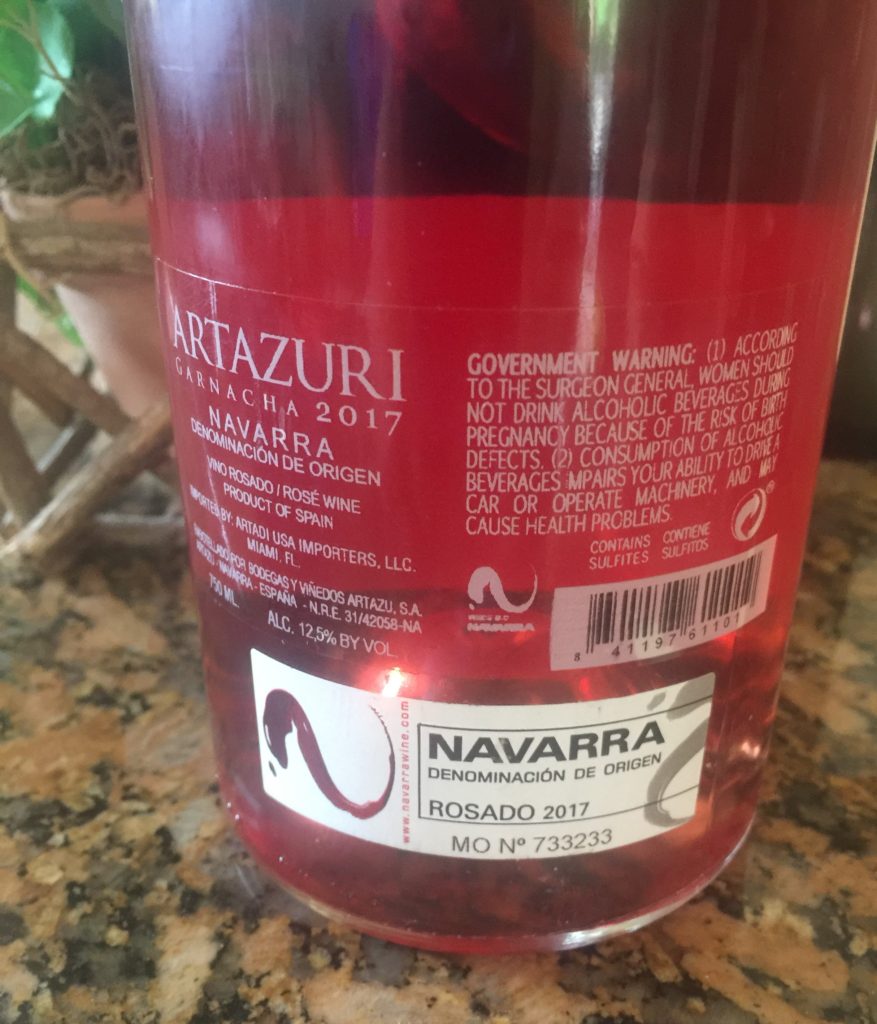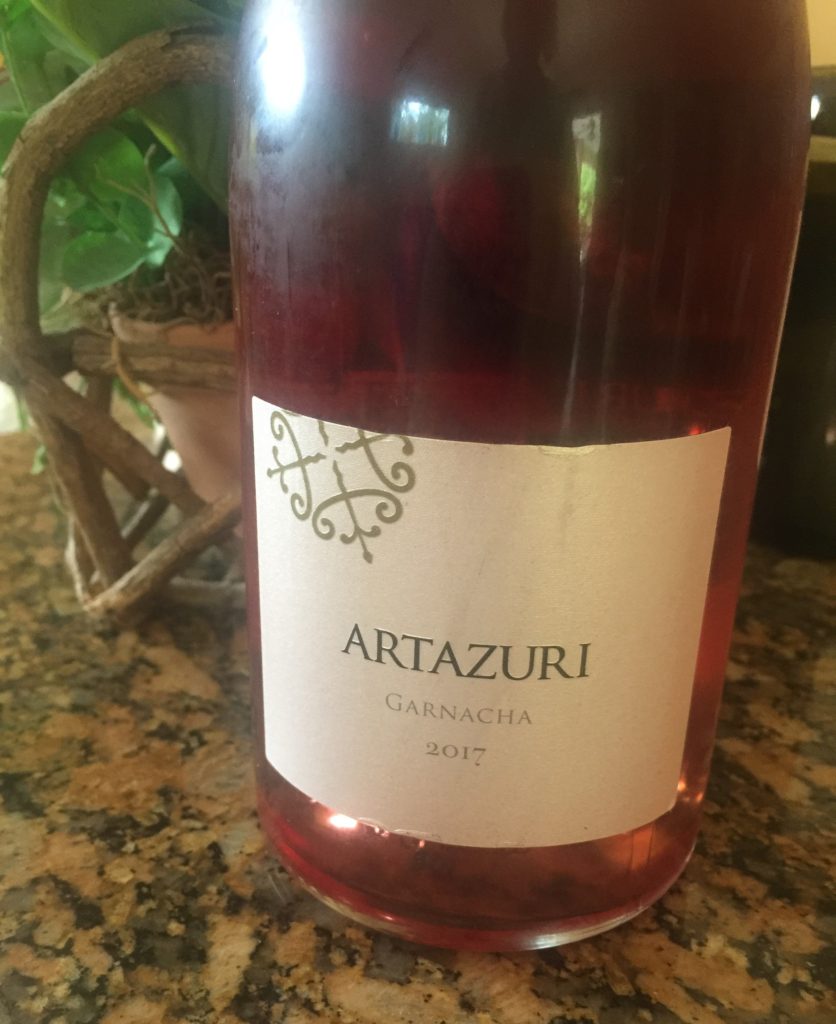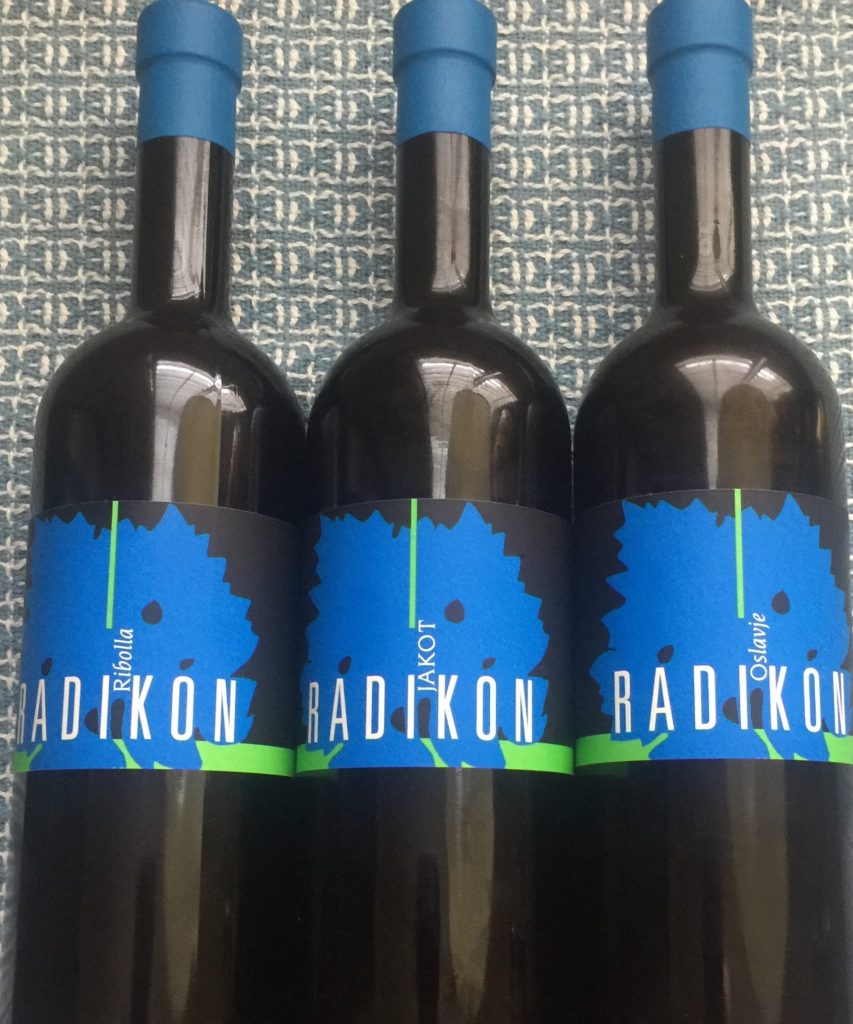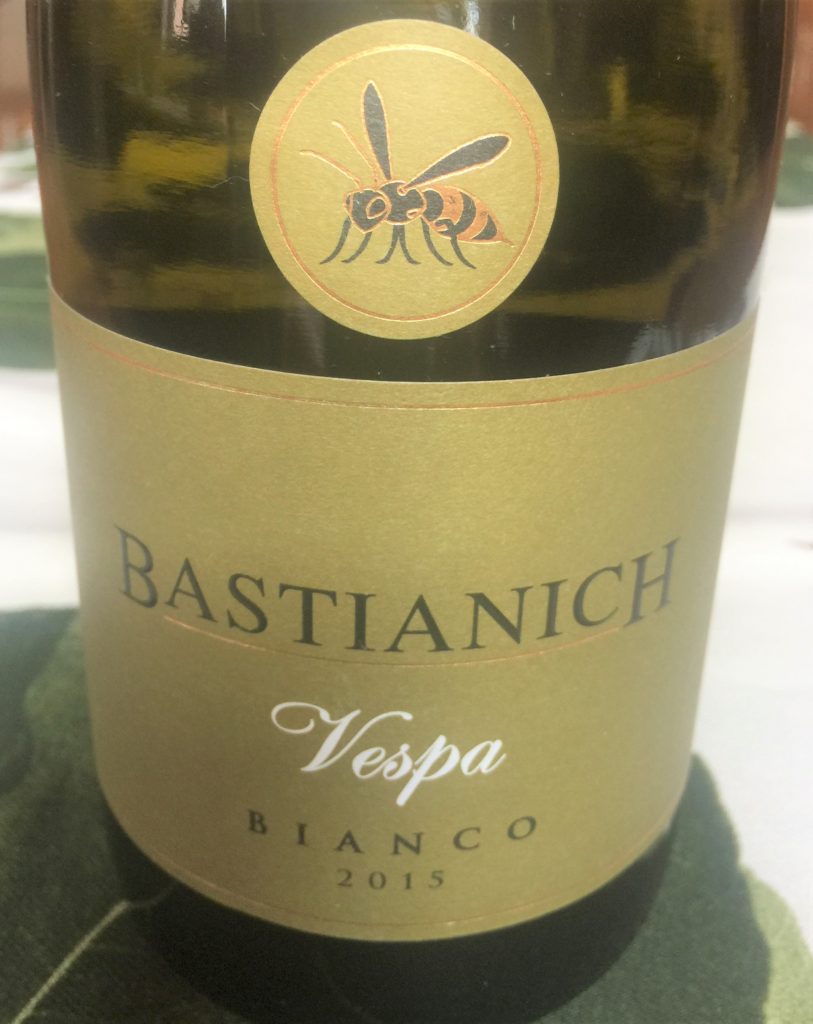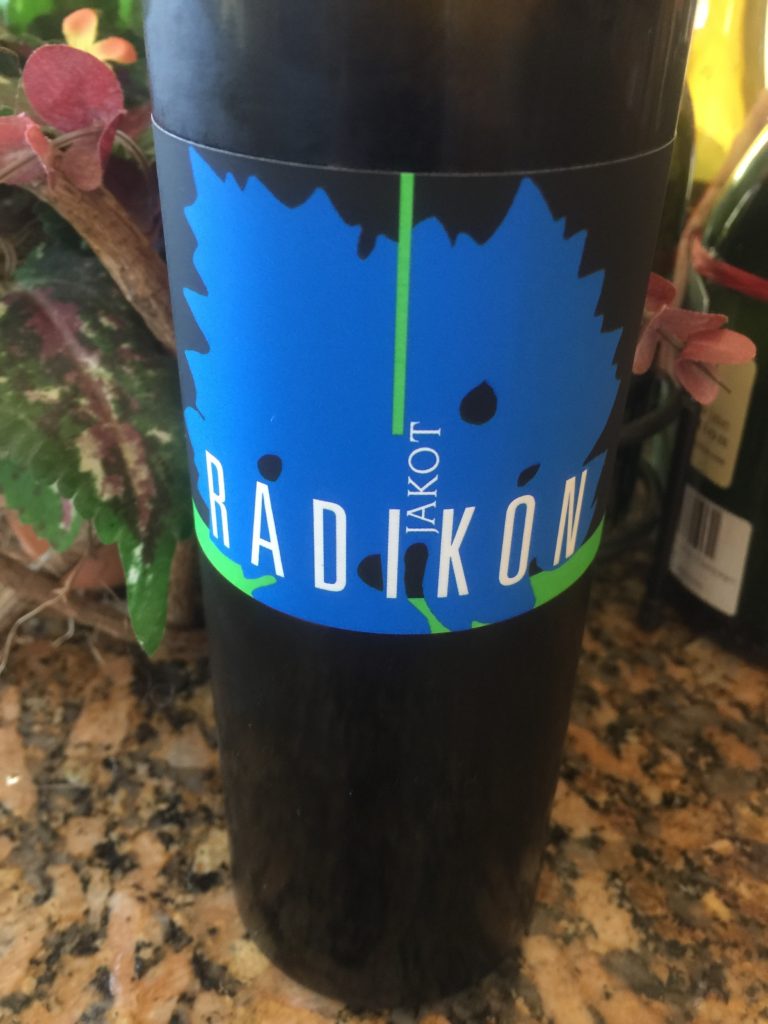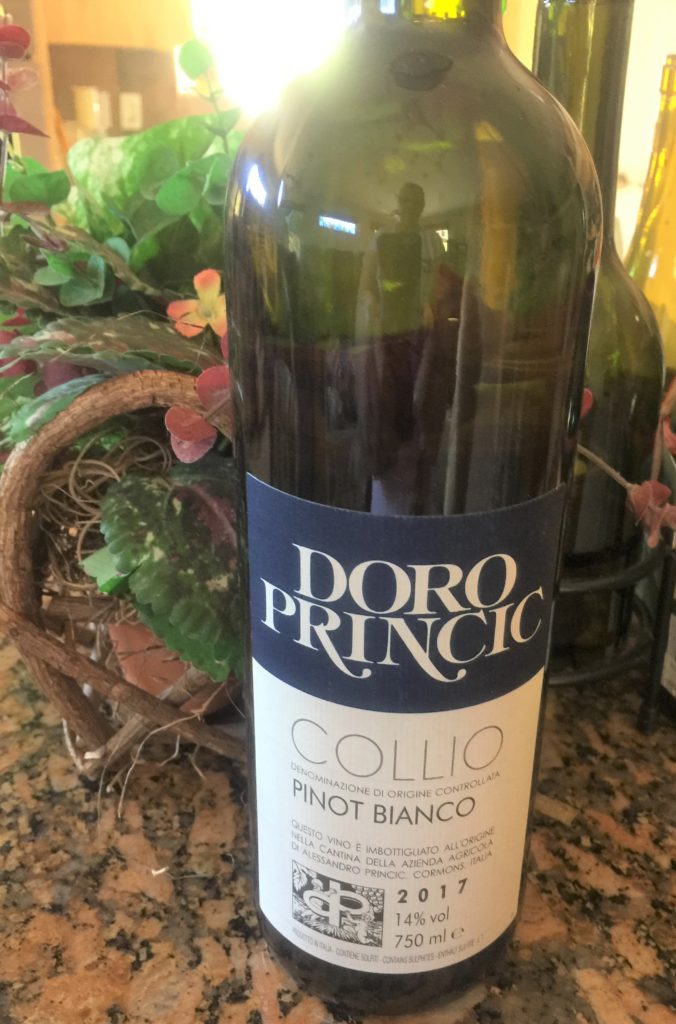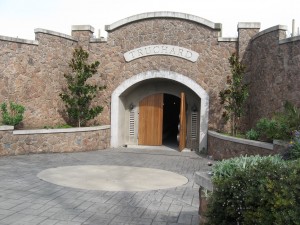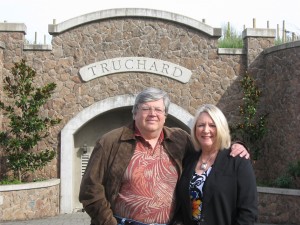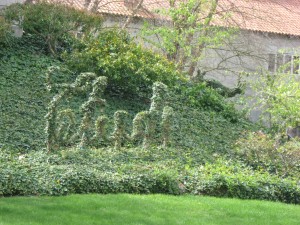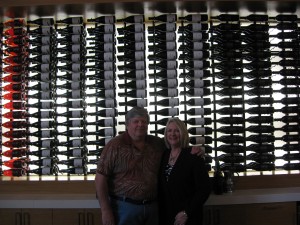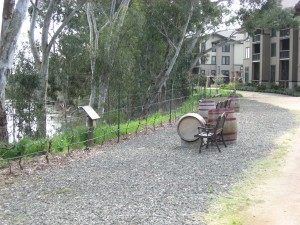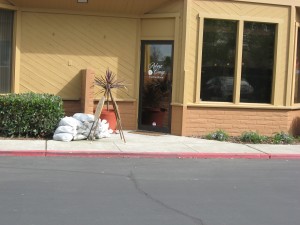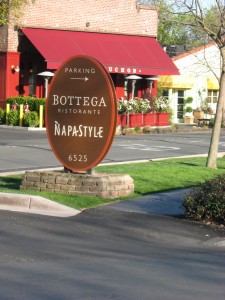“THE PYRENEES BASQUE REGION OF FRANCE AND SPAIN”
What in the world is Txakoli? A few months ago, I had no idea! And serve it with some Pintxos? Now that really sounds intriguing! As you probably have learned by now, if you have followed any of my previous forkandcorkdivine.com wine adventures, I’m always on the alert for a “new-to-me” and unique wine region to explore. When I asked a few of my most loyal winelover foodie friends (They are the ones who will follow me into whatever tangent I go off on, no matter how crazy it may sound kind of friends) said “How about Basque Country”? I immediately said “Yes, of course”! Here are the results of about three months of my off-and-on research and writing about “THE BASQUE COUNTRY”. I guarantee that you will probably learn more about Txakoli and Pintxos than you ever wanted to know! And off we go…….….
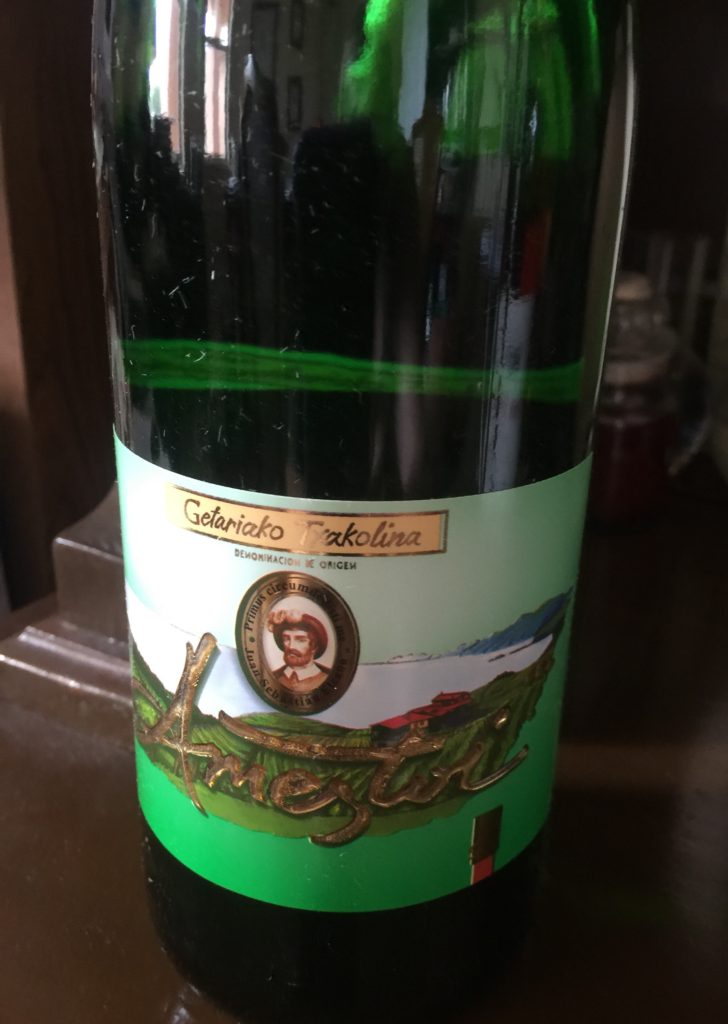
The Basque Region of the Pyrenees Mountains straddles between two countries and consists of seven different provinces of France and Spain. The part of the world referred to as “Basque Country”, or Euskal Herria, is home to the Basque people who first inhabited the area back 200,000 years ago during Lower Paleolithic times. It is geographically located in southwestern Europe between the Aturri River to the north and Ebro River to the south. This is the land of mountains. The mountain chains of the Pyrenees plus Aralar, Aizkorri and Gorbeia mark the dividing line between the watersheds of the Atlantic Ocean and the Mediterranean Sea. Extending for a little over 300 miles from the Bay of Biscay to the Mediterranean Sea and reaching up to a height of over 11,000 feet, the Pyrenees do an excellent job of separating the Iberian Peninsula from the rest of continental Europe. On the Iberian side of the region, the Basque Mountains of Spain transition from the Pyrenees in the east to the Cantabrian range in the west.
Just like other regions in mostly temperate climates between 30-50 degrees of latitude that usually promote excellent conditions for growing grapes, people in the Basque Country region have been growing grapes and making wine for centuries.
A QUICK OVERVIEW
3 million people live in Basque country including 262,000 on the French side or Northern Basque Country, the remainder in Spain or the Southern Basque Country. There are 10 million Basques and their descendants around the world. Those 3 million who still live here have their own language, their own culinary traditions and a very distinctive landscape. The term “Euskal Herria” defines the historical and cultural entity of the Basque area but not a unification of politics and government. The Basque language, known as “Euskara” is a link between all Basques and is one of the oldest languages in Western Europe; it may possibly be connected to the Iberian, Berber or other languages found around the Caucasus. Northern Basque Country does not officially recognize the language. If you only remember one thing about the Basque language, this is it! THERE IS NO “CH” IN BASQUE. IT’S SPELLED “TX”! TXOMIN sounds like “CHO-MEEN”. And there you have it…………your first lesson in speaking Basque!
The Basque people have long sought to have their own autonomous government. After the French Revolution (1789), the Basque provinces north of the Pyrenees were abolished and designated as French Republic departments. In Spain, their Nationalist Party formed a government that allied with General Franco during the Spanish Civil War. When they lost the war in 1939, Franco abolished their autonomy. When democracy was restored to Spain in the 1970s, the Basque Country was once again approved as autonomous.
Spanish Southern Basque Country is made up of four provinces, three of which are: Viscaya (Biscay, Bizkaia), Guipúzcoa (Gipuzkoa), and Álava (Araba) all comprising one of the 17 Autonomous Communities of Spain. These 3 make up the Basque Autonomous Region whose administrative capital is Vitoria-Gasteiz. The fourth province is Navarre, another one of the 17 Autonomous Communities also having its own government and parliament. Pamplona-Iruñea is the administrative capital of Navarre. We probably know it better for it’s famous “Running of the Bulls”.
Álava is in the foothills of the Pyrenees with an easy rolling landscape, mild climate and vineyards everywhere. Alava is the largest in size of the three provinces in the Basque Autonomous Community with almost 3000 km. and also the least populated of the three. It borders on Biscay and Gipuzkoa to the north, La Rioja to the south, the province of Burgos to the west and Navarre to the east. The landscape and climate make it an ideal location for wineries and some have taken great advantage of this by using avant-garde architecture, new brands and lots of marketing. The Marques de Riscal Winery in the town of Elciego has a building designed by Frank Gehry, the world-famous architect who designed the Guggenheim Museum in Bilbao, about 100 miles from here. Just outside Laguardia, another famous architect Santiago Calatrave created the Isios Winery. Not familiar with his work? He also designed the new Olympic stadium in Athens, Greece.
French Northern Basque Country has three provinces, all part of the Pyrénées Atlantiques Département which it shares with the Béarn region. They are: Labourd (Lapurdi), Lower Navarre (Baxe Nafarroa), and Soule (Xiberoa). These three provinces were united in one governmental body and then joined together with Bearn to form the Department of the Atlantic Pyrénées which makes up the new Aquitaine region, a fusion of three French regions of Aquitaine, Limosin and Poiton-Charentes, which was created in 2014.
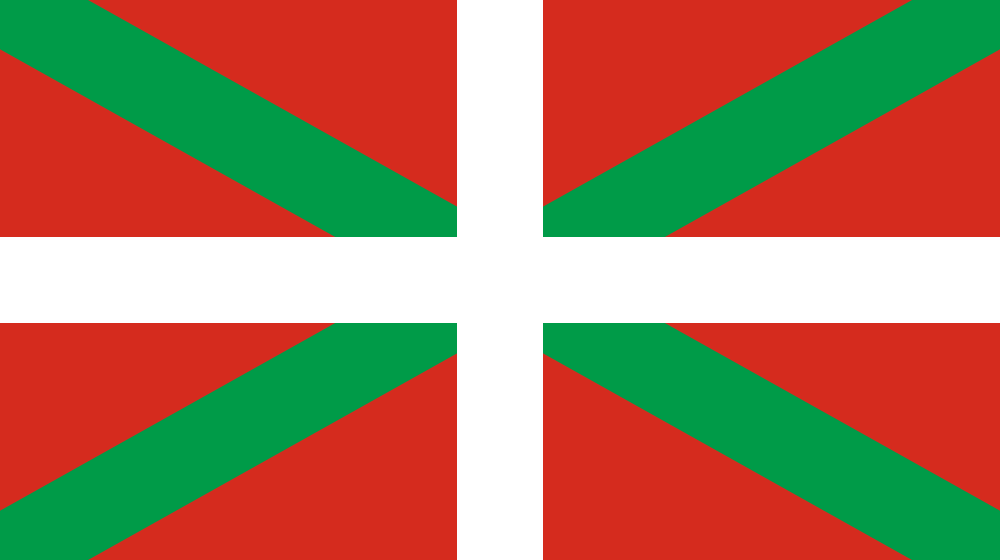
After reading many articles about the history and current status, It seems that Basque Country is both complicated and controversial. According to an article of February 12, 2019 in the online “basquetribune”, this region is filled with many differences from identity to versions of past history and what is to come in the future. “There are many citizens who feel Basque and only Basque, many who feel Basque and Spanish, others who feel Basque and French, and many (from Navarre) that do not feel Basque at all”. But we are here primarily to learn about the wine, so that is how we will focus moving ahead, no matter what the identity of the winemakers.
FRENCH NORTHERN BASQUE COUNTRY (Pays Basque Français/Pays Vasco Francés)
Fifteen percent of Basque Country is in southern France which is home to Biarritz, Bayonne and St-Jean-de-Luz (famous for sunbathing and surfing) and Hendaye in the Pyrénées foothills (famous for hiking). It’s a 1,108 square mile region in the western part of the Pyrénées-Atlantiques Department and the region of Nouvelle-Aquitaine. The region was first known as Aquitania because when Caesar came here, the Aquitani people lived here. They weren’t Celtic and are often regarded as Basques. There have been many wars and conquests since those days.
It has constituted the Basque Municipal Community since January 2017 and was formerly home to those 3 historic French provinces of Lower Navarre, Labourd and Soule. The department of Landes lies to the north, the Bay of Biscay on the west, Bearn to the east and Southern Basque Country on the south.
We wine lovers know it best of all for the indigenous grapes and wonderful interesting wines that we tasted in 2018 when forkandcorkdivine studied about the “le sud-ouest” region of France during our celebration of Wine Enthusiast Magazine’s Wine Star Award for the “2017 Wine Region of the Year”.
IROULÉQUY AOC
The grapes and wines of the French Basque Country are synonymous with the Irouléquy AOC. You can find it about 125 miles south of Bordeaux — as far south as you can go in France before crossing the Pyrenees into Spain – and 25 miles southeast from the Atlantic coast at Bayonne reaching right down to the Spanish border. Irouléquy AOC wines, or Irulegi, come from the historic province of Lower Navarre and are usually considered part of the Sud-Ouest wine region. These are the only AOC certified wines in the Northern Basque Country. About 550,000 liters are produced annually with about 70% being big fruity tannic reds, 20% intensely fruity deeply colored rosés and 10% tangy full-bodied whites. The tiny village of Irouléquy is in the middle of the AOC and according to Map-France.com, 320 people live there. The vineyards are often on very steep slopes which requires the development of special growing and terracing techniques by the Basque wine growers. The hills and steep ridges rise up to 3300 feet sheltering the valleys below. The terraces are between 100-400 meters above sea level and most of the soil is sandstone-rich clay deep red in color. Weather is usually calm here – rainfall is moderate, falling mostly in winter, and autumn is warm and dry, which usually makes harvest here less stressful than cooler wetter regions. However, they do sometimes suffer from the wrath of unpredictable mountain storms and the hot dry autumn wind called Haïze hegoa.
THE GRAPES AND WINES OF FRENCH BASQUE COUNTRY
Whites
The classic southwest France white wine blend is made from Courbu, Petit Courbu, Gros Manseng and Petit Manseng, the same blend used nearby in the Jurançon and Bearn appellations. The grapes ripen more fully and retain more of their refreshing acidity here than further inland due to sunny ocean breezes. The wine is full-bodied with aromas of tropical fruits and just the right amount of tangy acidity.
Gros Manseng (Izkiriota in Basque) represents the main part of white grapes planted here. This golden color grape brings a beautiful aromatic freshness to wine along with quince, apricot and passionfruit aromas with a spicy floral note and plenty of acidity. It makes wine with moderate alcohol potential sometimes reaching 13% alcohol level. Gros Manseng originally comes from southwestern France, and for a long time was not produced in any other areas. It is ideally suited to the high humidity and dry sunny late summers of the region. Gros Manseng almost disappeared in 1958 but production has constantly increased since the 1970s.
Petit Manseng (Izkiriota Ttipia in Basque) gives power and volume to the wine. It brings aromas of citrus, exotic fruits and truffles with freshness on the palette with elevated acidity and an aromatic complex finish. Petit Manseng is also primarily grown in this region of southwest France, although still in small quantities, plus Basque Spain and Italy. Some of it has found its way to the US and Australia. This grape is often left on the vine to made a late harvest dessert wine.
Petit Courbu or Courbu (Xuri Zerratia in Basque) is a rare grape variety in Irouleguy and really isn’t found in any other part of France. It adds some smoothness and roundness to the wine along with honeyed citrus aromatic notes often accompanied with minerality. It is perfect for lowering the acidity and alcohol levels of the Mansengs. Petit Courbu is not the same grape as Courbu Blanc; however there are very subtle differences and both grapes are used to make the dry white wines of Irouleguy. This is another grape that neared extinction but has made a bit of a comeback.
Reds
The red wines are made from Cabernet Franc and Tannat grapes which have been grown here for centuries. Tannat is especially symbolic of red wines in Southwest France; Madiran being the most famous. Cabernet Sauvignon is used in smaller quantities. The resulting wines are so fruit-forward and intensely tannic that they usually need at least four years before you can drink them. You can cellar the best examples for a good ten years. If you do, you will be rewarded with spicy, earthy notes and softened tannins.
Cabernet Franc (Axeria in Basque; “the fox”) adds aromatic finesse and elegance to the wines of Irouleguy. It is all about red berries, violets and notes of spice.
Cabernet Sauvignon (Axeria Handia in Basque; “the big fox”) adds a bit of character, structure and volume to the wines. It brings some aromas of blackberry, chocolate and sometimes pepper. It is only used in small amounts.
Tannat (Bordelesa Beltza in Basque; the “black Bordeaux”)) is also historically from southwest France. It is the major red (or black!) grape in Irouleguy vineyards. It is full of black currant, blackberry, black plums, black licorice, vanilla, dark chocolate and possibly some graphite, blood, iron, menthol, sandalwood, tobacco, cardamom, brown spices and smoke. It is definitely not for the winelover who prefers finesse and elegance in the glass! But it does bring a balanced tannic structure to the wine.
The most popular Irouléquy wines are made by Domaine Arretxea, Domaine Brana, Domaine Ilarria, Jean-Claude Berrouet and the Cave d’ Irouléquy.
Rosés
Lots of rosé is produced here but most of it is for local consumption. It’s a fruit-driven very fragrant rosé with a deep color and aroma that is very similar to that produced in nearby Navarra. It’s excellent to pair with the local spicy cuisine, especially a Piperrada which is a stew make with Jambon de Bayonne ham and spicy Piment d’Espelette peppers and is very similar to a ratatouille. The ham and peppers are both local products with their very own protected AOC.
THE WINEMAKERS
We can thank the Romans and the monks for developing vineyards here, just like many other areas of France. In this case, it was the Roncesvalles Abbey where the eleventh century monks made wine for religious pilgrim travelers on the way to the Cathedral of Santiago de Compostella in Spanish Galicia. Between constant decline and the Great French Wine Blight in 1912, there was little land cultivated in vineyards. Today there are a handful of independent vintners plus the Cave Irouléquy, a cooperative formed in 1952 to attempt a rescue resulting in some wines receiving certification and AOC status awarded to Irouléquy in 1970. In 1970 there was just 250 acres of vineyards cultivated by 60 growers. Good luck finding some for purchase – they are still few and far between! But with persistence in internet wine shopping, you should be lucky enough to latch onto a red. These are not your big black tannic wines of Madiran. They have more exotic flower and red fruit flavors with a bloody iron tang. I also suggest trying extra hard to find a white because they are so unique with their flowers, yellow fruits, savory and saline flavors and aromas.
Domaine Arretxea
Michel Riouspeyrous worked on his family farm in Irouléquy until he studied Agronomy and went off to military service. He eventually came home with Thérèse, his wife from Alsace. In 1989 they rented 2 hectares of vineyards and started farming organically. They moved on to biodynamics which was radical then especially since they bottled their own wine without joining the cooperative. Their Domaine (Maison) Arretxea now has eight hectares of steep terraced land set against the peaks of the Pyrenees with sheep grazing between the vineyard rows and beautiful wildflowers. The majority of their grapes are native varietals: Tannat (red), Gros Manseng and Petit Manseng (whites) which are ideal to grow in the soils of dolomite, clay, limestone, silica, mica and iron oxide. They vinify each different terroir separately by using traditional methods and bottle four cuvees. White wines are fermented and aged in foudres and stainless steel; reds are aged on the lees in cement or foudres then unfined and unfiltered. Rosé is made by the Saignée method with no malolactic fermentation. They now own about 20 acres and make just 3,300 cases a year.
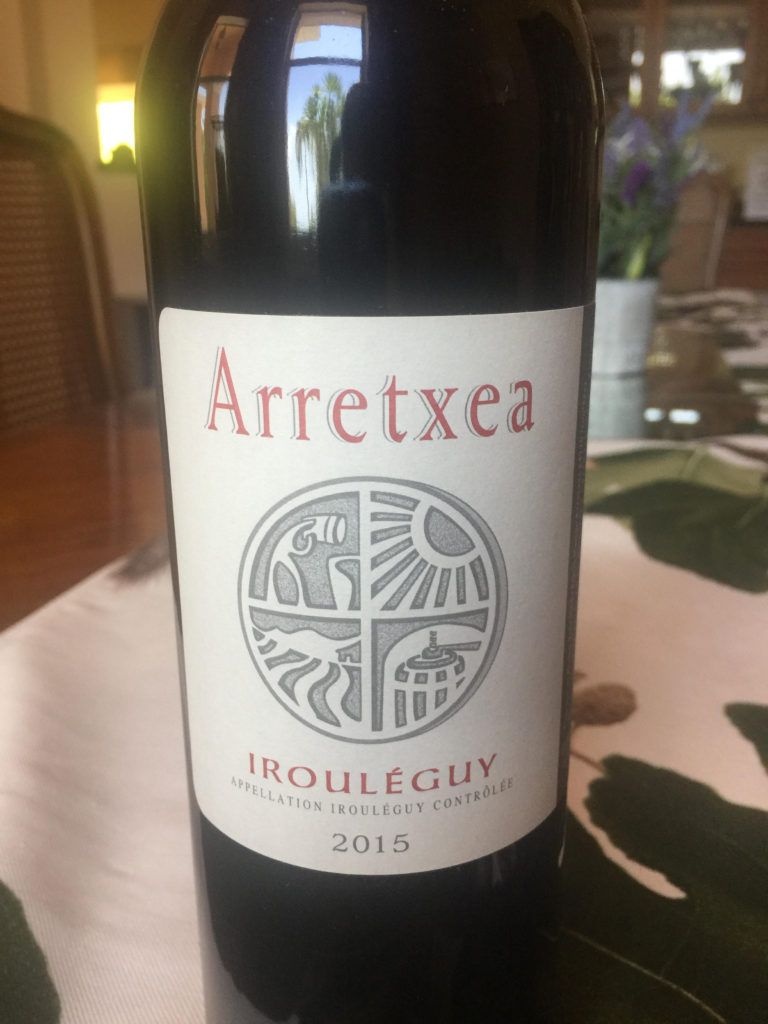
Domaine Arretxea Irouléquy 2015, Irouléguy, France
Domaine Arretxea Irouleguy Rouge is made from a blend of 66% Tannat, 17% Cabernet Franc and 17% Cabernet Sauvignon grown on 7 – 15 year old vines in 5 hectares of vineyards. Each parcel of grapes was vinified separately, macerated for 3 – 4 weeks with daily punch-downs, aged for 10 months on the lees in cement, then bottled unfined and unfiltered. We expect a beautiful purple color wine with aromas of cassis, raspberry and licorice; then full-bodied on the palate with black fruit notes, herbs and minerality. The tannins promise to be well balanced and we can drink it now or put away for a few more years.
Domaine Brana
The Brana family has been passionate about the wines of Basque Country since 1897 when Pierre-Etienne Brana began trading wine. In 1974 grandson Etienne Brana and his wife Adrienne began a distillery and planted an orchard of pear trees William. Ten years later they started making Irouléquy wines and set up their own vineyard. They have 22 hectares planted along very narrow terraces cut out of the remarkably steep hillsides. Their farming practices are non-intervening and include bio-dynamic principles. All harvesting is done manually. They have exceptional terroir and brought back their ancestral viticultural traditions with the rebirth of the white Irouléquy blend – Courbu and Manseng. They make reds from their origins – Cabernet Franc, Cabernet Sauvignon and Tannat. Four generations later, Martine and Jean Brana continue the family goal for quality.
Domaine Brana Irouléquy Blanc 2016, Irouléquy, France
The Domaine Brana Blanc is a savory but fresh and lively white made from a blend of 50% Gros Manseng, 30% Small Corbu and 20% Petit Manseng. The color should be crystal clear with green highlights. On the nose, we expect citrus notes, exotic fruits and flower pollen. It promises to be nicely balanced with a fresh long harmonious finish. It should be especially good paired as an aperitif or with fish, shellfish, sheep and goat cheese.
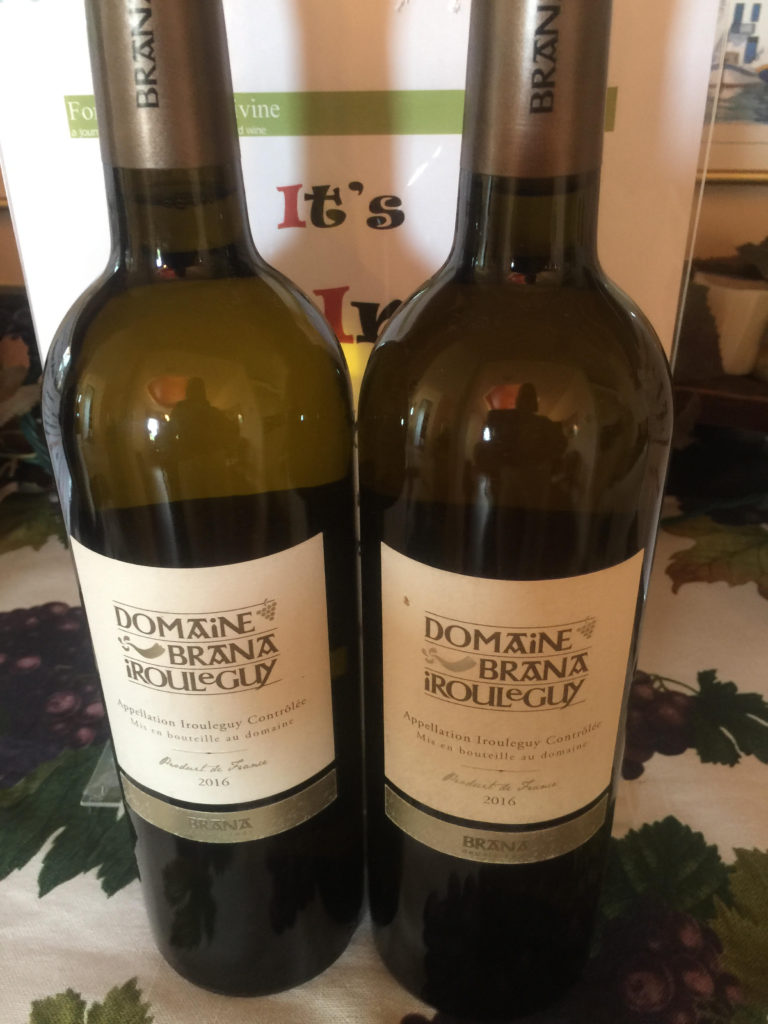
“Herri Mina” Jean-Claude Berrouet
If Martine and Jean Brana ever feel that they need any winemaking advice, they can always go to Jean-Claude Berrouet, another Irouléguy native. Jean-Claude just happened to be the winemaker for Chateau Petrus for over 30 years and has consulted all over the world! It seems that Jean-Claude became homesick for his Basque Country and eventually came home. In 1992 he planted 4.5 acres of sandstone terraces and produced his first vintage in 1998. He named his estate “Herri Mina” which means country and homesick in Basque. Jean Claude makes a wonderful white blend of Gros Manseng, Petit Corbu and Petit Manseng from vines no higher than 400 feet above sea level. He also produces a small amount of 100% Cabernet Franc wine.
Domaine Ameztia
Although the Costera family has been making Irouléquy wine since the 17th century, it wasn’t until 2001 that Jean-Louis, a shepherd turned winemaker, modernized the winemaking facilities on the family estate. He brought on board his Bordeaux-trained oenologist nephew, Gexan, and started relinquishing control to him. Previously Gexan had been practicing his skill by making wine at Arretxea. Along with the same philosophy used in raising the best lambs, the two of them are now using more organic practices and are replanting the Cabernet Sauvignon with Cabernet Franc and Tannat. Their 7 hectares also have a little Gros Manseng and Petit Manseng for their white wines and a single-vineyard wine called Cuvee Pantxo, named after a close family friend.
Irouléguy Wine Cellar
The Cave d’Irouléguy began in 1952 when 9 wine growers decided to join forces in a “cooperative”. The creation of the Irouléguy AOC in 1970 gave the group some momentum; they now represent 60% of the planted vineyards of the appellation (150 hectares) and market 650,000 bottles per year. There are currently 81 wine growers associated in the cooperative.
SPANISH SOUTHERN BASQUE COUNTRY (Pais Vasco)
Known as Pais Vasco in Spanish, it is bordered by the Bay of Biscay to the north and Navarra to the east, La Rioja to the south, and Cantabria to the west. The Pyrenees Mountains separate Spain from France to the northeast; however Navarra makes up most of the actual border with French Basque Country. This 2793 square mile autonomous Spanish portion of Basque Country was officially established by Spain in 1979. Its government has a president and a parliament in the capital of Vitoria-Gasteiz. The Spanish mountains are steep and jagged and rivers are short and fast, cutting deep gorges through the mountains. The people of the Pyrenees tend to have individual farms, called caserio, which allows them to cultivate their small mountain plots. This is in contrast to the Ebro River basin where there are more communal group vineyards, and they are in open fields. Most of the population is along the coast with four-fifths of the Basques in the coastal Greater Bilbao area. Bilbao is the largest city of the region and home to the famous Guggenheim Museum Bilbao. Head east along the coast to Getaria, a fishing village where you can enjoy some top-notch fresh seafood. A little further east is San Sebastian, a provincial capital with a beautiful beach and cliffs and Hondarribia, a fishing town with a walled old town. Basques have traditionally been sheepherders, but corn and potatoes are heavily cultivated here.
The Pais Vasco is part of Green Spain where the landscape is lush and green. This area spans from Galicia in the northwest to where Basque Country borders on France in the east. Winemaking here is limited because many vintners didn’t bother replanting after the scourge of phylloxerra during the second half of the 19th century. But what vines there are grow some pretty outstanding grapes, and winemakers make a very distinctive style of wine. This is the land of TXAKOLI! Pronounced cha-koh-lee, Txakoli has been made here by the Basque since the Middle Ages. It’s the characteristic spritz, ultra-dry, ultra-high acid that makes it perfect for local seafood. But before we dig deep into the unique and exciting world of Txakoli, let’s find out what grapes grow here.
THE GRAPES AND WINES OF SPANISH BASQUE COUNTRY
There are two main categories of wine in the Spanish Basque Country: 1) Txakoli, the traditional Basque wine, and 2) the wines from the Rioja Alavesa, which is one of the three sub-regions of the Rioja DOC. There are some reds and an occasional rosado, but this is predominantly white wine country.
The Grapes of Spanish Basque Country
Hondarrabi Zuri is the dominant white grape of Spanish Basque Country and is native to the area. It is used to make the citrusy, floral wine with lots of minerality and a touch of fresh herbs known as Txakoli. You can sometimes even get an aroma of sea spray. The grape is named for the town of Hondarribia and the word “Zuri” means white in Basque language. Some experts say the grape is indigenous to Basque Country while others say it comes from southwestern France. It can be blended with a number of other Basque Country varieties of which Folle Blanche is the most common, but also small amounts of Chardonnay, Pinot Blanc, Sauvignon Blanc and Riesling.
Hondarrabi Beltza is the main dark-skinned variety of Spanish Basque Country, and the only place it is grown. Its parent is believed to be Cabernet Franc and tastes of raspberries, black fruit and violets. It is also used to make Txakoli in both red and Rosado styles. The wines are fresh, meant to be consumed young and are high in acidity. They are sometimes bottled with a bit of carbon dioxide to keep their freshness.
Folle Blanche is a white grape grown in Spanish Basque Country where it is known as Mune Mahatsa and sometimes blended with Hondarrabi Zuri. It’s a little known grape found almost exclusively in western France especially the Loire Valley. High susceptibility to rot and disease sent it on the decline. A high acidity and fairly neutral flavor profile make it ideal for brandy — It is most often used to make brandy in the southwest of France. Also known as Picpoul in some parts of the French southwest; however not the same as the Picpoul found in Languedoc-Roussillon.
Petit Corbu, Gros Manseng and Petit Manseng are white grapes used in smaller amounts in Spanish Basque Country. See information about these grapes in our French Basque Country section.
The wines:
White………..TXAKOLI
Basque farmers made homemade Txakoli up until the 1980s. The name itself means “farm wine” or “homemade wine”. Txakoli grapes are not easy to grow – there are cold winds and year-round rain creating constant threats of mildew and mold. Txakoli (also known as Txakolina) almost died out due to the phylloxerra plague in the 19th century, but the Basque people tried to keep their culture alive and were finally rewarded when three production areas received DO status in the 1990s. Today there are 33 wineries.
During the recent years Txakoli has become quite famous for several reasons. First of all, the quality of the wine has improved greatly, but even more importantly, the wine itself fits nicely in the trend for light fruity easy-to-drink wines. It has a pale greenish hue with citrus, green apple, saline and mineral notes and is perfect with fish, seafood and appetizers. Txakoli is bone dry, extremely sleek on the palate, bracing acidity, often semi-sparkling and often served from several feet high into a little tumbler that should be low and wide. Splashing on the floor is quite acceptable! This process is called “breaking” and tends to open up the wine making it taste and smell even more vivid. It should be served cold, and drink it before the bubbles are gone in order to get the whole Spanish Basque experience. If you want to pour Txakoli like a Basque Country native, get yourself a “speed pourer spout” advertised “for perfect perpendicular flow of wine, Txakoli, liquor and cider………” and watch a video on the fine art of pouring Txakoli.
Be sure not to tuck this wine away in your cellar; you had better drink it the first year! Txakoli is traditionally fermented in kupels, which are very old large oak or chestnut barrels, but some Txakoli is now made in stainless steel vats. Fermentation lasts 20-25 days and then the wine is left on its lees. The CO2 gives the wine its sparkle and since the wine isn’t racked, the sparkle is still there when poured into your glass. The alcohol content is usually between 9.5 – 11.5 %. Do be sure to try it whenever you can as it is difficult to find anywhere else in Spain – or in the world! If you are lucky enough to be tasting it there in Spain on a January 17, it’s Txakoli Day!!!
Txakoli goes perfectly with pintxos, which you will be served in every tavern in Basque Country and in other areas nearby such as Cantabria, La Rioja, and Navarre. Officially pintxos or pinchos are small snacks typically found on a tray in bars or taverns. They are called pinchos because they usually consist of ingredients placed on a small slice of bread fastened with a toothpick or “spike”. The customer keeps track of the number of items they have eaten by the number of pinchos accumulated. Sometimes, the toothpicks even come in different shapes or sizes to differentiate the prices. You can put just about anything on a pintxo, but most commonly in Basque Country you will find fish (hake, cod and anchovy), tortilla de patatas, stuffed peppers and croquettes. It is a way of life here to socialize with your friends while eating pintxos and drinking a glass of Txakoli white wine.
In case you want to try your culinary skills making Pintxos, you can get some excellent Pintxos recipes on the internet that all sound quite tasty, or you can invest in some cookbooks. While this one is not from Basque Country, it is by a San Francisco Chef Gerald Hirigoyen who along with Lisa Weiss published this book in 2009: “PINTXOS small plates in the Basque tradition”. All of the recipes sound delicious and I plan to make several of them at our upcoming “Txakoli, Pintxos and Tapas” wine dinner event. It received great kudos from both Eric Ripert and Paula Wolfert.
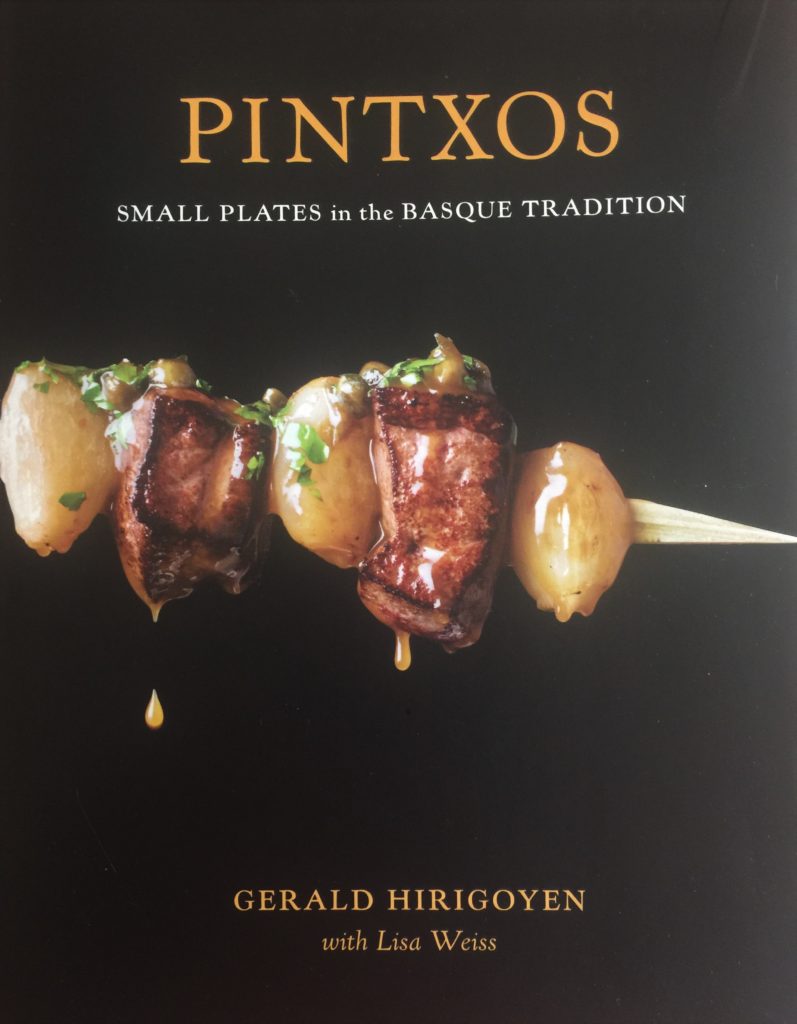
THE DENOMINACIONS DE ORIGEN (D.O.s) FOR TXAKOLI
D.O. Getariako Txakolina (Chacoli de Guetaria): This was the first Txakoli to be awarded D.O. status back in 1989. It is located in the north of the Guipúzcoa Province around the towns of Getaria and Zarautz along the coast of the Bay of Biscay. The vines are planted on slopes facing away from the sea to protect them from strong breezes and make sure they get enough sun. Vines are trained over wires and sometimes over earthen or stone pillars. With just 200 hectares of vineyards it may be the smallest in size but is the largest in production which is why you will probably see more of it available here in the US. Accepted grape varieties are Hondarrabi Zuri (about 95% of what is grown here) and Hondarrabi Beltza (about 5%).
Txomin Etxaniz Winery (Txakoli de Getaria)
is the most renowned producer of Txakoli and the largest winery in Getaria with 600,000 bottles produced annually. The Txueka family has been in the wine world since 1649 and spearheaded the move for legal designation of the first Txakoli appellation. “Txomin” is the same as “Domingo” in Spanish and represents a modern winery with spotlessly clean stainless steel equipment that produces and exports about 15% of its 300,000 bottle production to 26 countries. They have trellised vines over 100 years old growing on 35 hectares right next to the Atlantic Ocean. Since the US is the largest export market for Txakoli, you can find Txomin wine right here to experience it. They do also make a Txakoli rosé which was unheard of until about 10 years ago. It’s a 50/50 blend of the white Hondarrabi Zuri and the red Hondarrabi Beltza, pale pink with strawberry scent and savor and dry in taste. According to Mr. Txueka, they make it primarily for American taste. Txomin is also experimenting with fermentation in large acacia wood barrels which give a distinctive new take on Txakoli. Now they also make a traditional method dry sparkling wine not at all unlike Champagne.
Txomin Extaniz Getariako Rosado 2018, Getariako Txakolina D.O.
The Txomin Rosado is a blend of 60% Hondarrabi Beltza and 40% Zuri. Grapes are harvested manually in early October then go to the winery for an 8 – 10 hour maceration followed by temperature controlled fermentation and rest on its lees before bottling. The resulting wine is light, fragrant, fresh and fruity with hints of minerality and medium acidity and an alcohol content of 11%. This wine pairs well with white meat, grilled seafood and as an aperitif. Serve it between 45-50 degrees F.
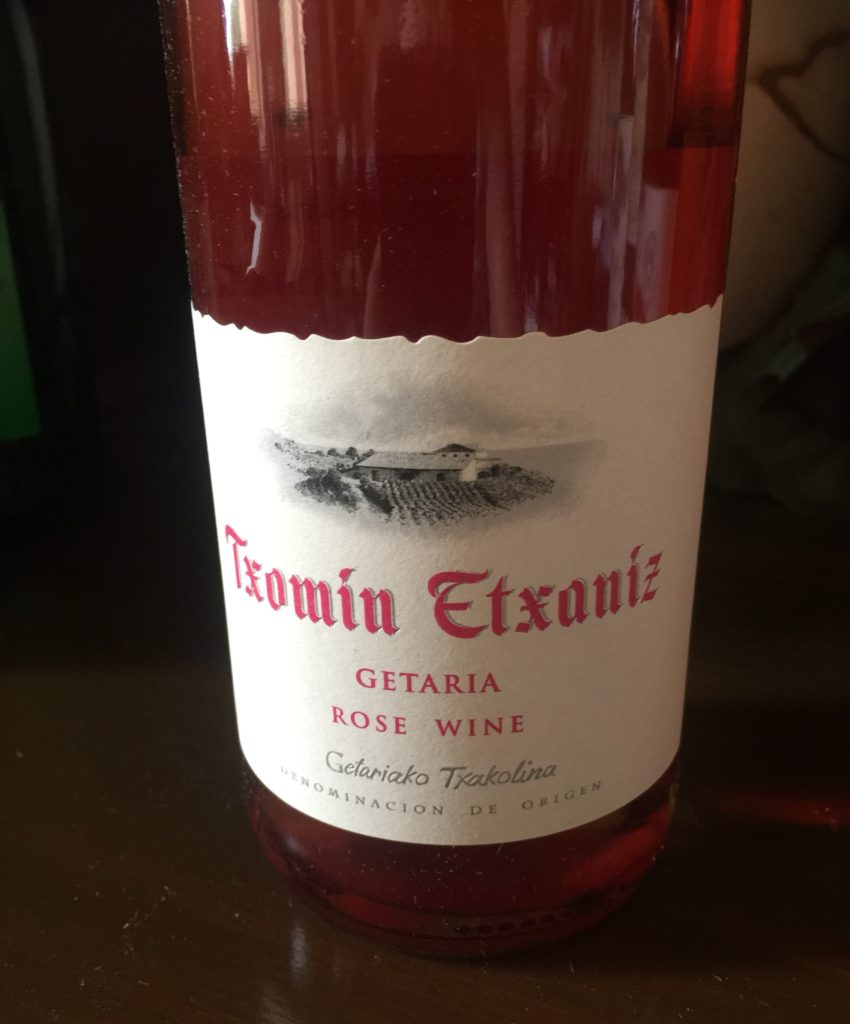
Ameztoi
is one of the top producers of Getariako Txakolina. Ameztoi has 20 hectares of 25 year old vines facing the Bay of Biscay on seaside cliffs with views of the town of San Sebastian 20 minutes away along a serpentine highway. Ignacio Ameztoi is the fifth generation to make the family’s Txakolina in Getaria. Hondarribi Zurri and Beltza grapes are sustainably farmed and used to make wine fermented in stainless steel kept chilled to about 32 degrees F. and bottled with residual carbonic which causes that wonderful Txakoli natural spritz. Ametzoi was the first producer of rosé txakoli and méthode traditionelle Txakoli sparkling wines in addition to their whites and reds. Their Rubentis rosé is a field blend of Hondarribi Zurri and Beltza.
Ameztoi Getariako Txakolina 2017, Getariako Txakolina DOC
The Ameztoi Hondarrabi Zurri Txakolina is pale white with a touch of green, fragrance of green apples and grapes and notes of mint and green tea. It is dry on the palate with a big aromatic finish and a fine elegant effervescence. The alcohol level is 10.5 – 11% with no fining or filtering. It pairs well with all kinds of seafood and fish – an excellent choice for oysters, sushi or tempura fish. Drink it young between 45-50 degrees F. W&S rated it at 91 points.
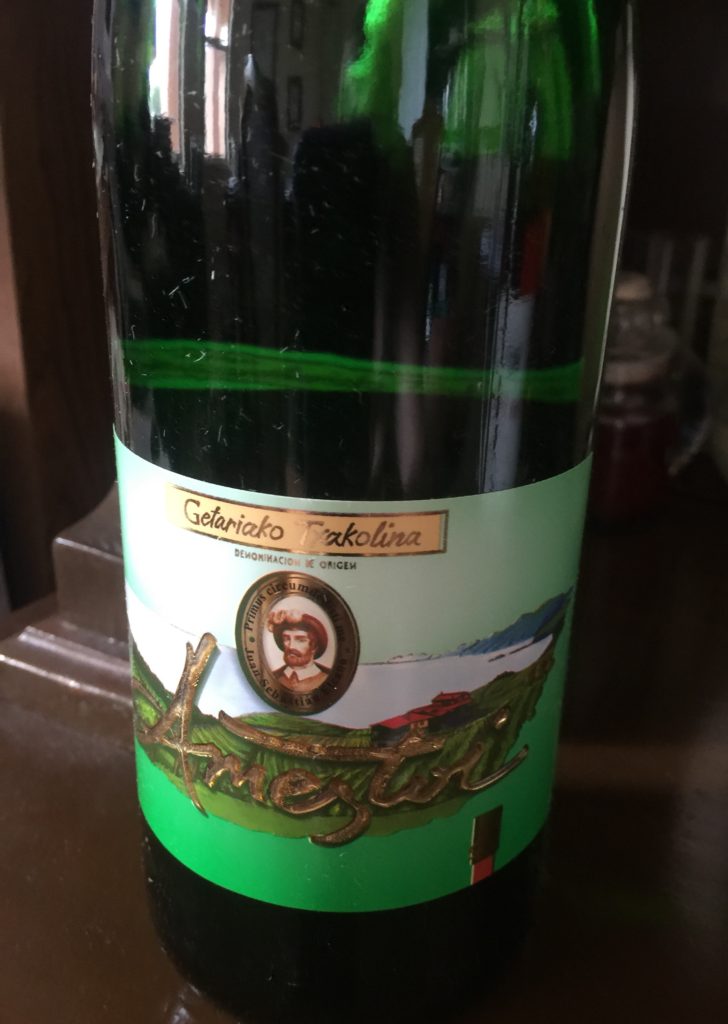
D.O. Bizkaiko Txakolina (Chacoli de Viscaya): Established in 1994, it’s located in the Viscaya Province in the north of Basque Country close to Bilbao and the coast. The 250 hectares of vines are planted around 500 feet high. You will find a few more Hondarrabi Beltza vines here, therefore more reds and ojo gallo, a dark rosé, but the main variety is Hondarrabi Zuri with some Folle Blanche. Vines here are on pergolas near the coast and trellises further inland. There are 69 wineries in this D.O. and most are very small.
D.O. Arabako Txakolina (Chacoli de Alava): Created in 2001 on the initiative of the only five producers left in the Alava Province, it’s the newest region and has 60 hectares. Alava is further inland than the other two, which means the grapes can get riper. Alava is also known as Rioja Alavesa (part of the Rioja D.O.) which is just to the south but is also a historic Basque region. Rioja wines are produced in the southern part of the province, and Txakoli vineyards are to the north right beside the border with the Vizcaya Province. Grapes permitted are white Hondarribi Zuri, Gross Manseng, Petit Manseng and Petit Corbu and red Hondarribi Beltza. There are small amounts of red and rosé Txakoli produced here. Alcohol content is 9.5%.
Txakoli is also produced in the Cantabria and Burgos regions. When Spain tried to limit production just to the Basque Country, the producers of Burgos reminded them that they had been making it for over 10 centuries!
From Txakoli to the Ebro River Valley
We came to Spain to visit the Spanish Southern Basque Country. While the Pais Vasco region is what first comes to mind with the zesty white Txakoli wines, there are two more very important regions to explore as part of Basque Country. The sub-regions of Navarra and La Rioja are found in the Ebro River Valley, and we are heading there next. Navarra is known mostly for rosado wine made from the Garnacha (Grenache) grape, but there is so much more to learn there. La Rioja is the home of King Tempranillo plus some very worthy oak-aged white wines of Viura (Macabeo). We can’t talk about Basque Country without mentioning these next-door neighbors with some very famous and long-standing bodegas that include Lopez de Heredia and Marques de Murrieta. Besides Navarra also falls under a sub-zone of the D.O. Rioja, its southern neighbor. So we are legally bound! Next stop from Pais Vasco —- Navarra!
Rose………….from Navarra
D.O. Navarra
Navarra is another one of Spain’s 17 Autonomous Communities and has its own government and parliament. The capital of Navarra is Pamplona-Iruñea, famous for the “Running of the Bulls” in the annual San Fermin Festival. Navarra is considered as part of the Spanish Southern Basque Country. This is a huge region with a great variety of landscapes and climates from mountains to deserts………and a variety of wines. It is close to the Bay of Biscay in the northwest, the Pyrenees in the northeast and the Ebro River all combined with moderate temperatures created by the Mediterranean climate. Winemaking was recorded here way back in ancient Roman times; but the winemaking boom was cut short by phylloxerra just like most other areas of Europe.
The D.O. Navarra was created in 1933 with 11,000 plus hectares differentiated into five production subzones with three different climates:
Cool humid Atlantic climate:
Baja Montaña sits along the border with Aragon in eastern Navarre at the foothills of the Pyrenees Mountains. It’s hilly here with lowland forest. The grapes are only red – Garnacha and some Tempranillo.
Valdizarbe is in Central Navarre just south of the Pamplona basin in the heart of the Pilgrims Way to Compostela and is the most humid of the subzones. It largely runs along the river Arga in an area of gentle hills and valleys. You will find Tempranillo, Garnacha, Cabernet and Merlot along with some Chardonnay and Malvasia.
Tierra Estella is in western Navarre along the Pilgrims Way to Santiago which borders on the official Basque Country area and La Rioja. The land slopes down towards the south where you will find lots of olives and cereal crops. The grapes include Tempranillo plus Cabernet Sauvignon and quite a bit of Chardonnay.
Continental climate with extreme winters and summers:
Ribera Alta is located in central Navarre along the Ebro valley between Aragon and La Rioja. It’s a large very flat plain with little vegetation. Tempranillo is the main grape followed by Garnacha. There is quite a bit of white Viura and Muscatel here.
Mediterranean climate with hot summers and moderate winters:
Ribera Baja is in the south of Navarre near the town of Tudela and is the most important of the five in terms of area and number of wineries. It covers 14 different municipalities, all on a dry, sandy plain on the right bank of the river Ebro.
Navarre has traditionally been known for production of crisp, fruit-driven rosé (rosado) but has been overshadowed for many years by its southern neighbor, Rioja, for making high quality red wine. But that has begun to change somewhat thanks to innovative and brave winemakers who have done a lot to bring Navarre out of the shadows. The rosado is generally made from Garnacha which pairs really well with the hearty local cuisine; however recently Tempranillo and varietal reds based on Cabernet Sauvignon, Merlot and Pinot Noir are also produced. A smaller quantity of white wines are produced and based mainly on Chardonnay, Viura and Garnacha Blanca. A natural sweet wine is made from Moscatel.
Bodegas y Viñedos Artadi
Artadi began in1985 as a cooperative making traditional young wines for the local market. It is now an icon growing grapes and making wine in three different Spanish wine regions: Alava, Navarra and Alicante. These 150 hectares of vineyards respect the terroir and natural environment of each region. In 1992 the Lacalle and Laorden family took control of the project that began with 80 hectares in Laguardia, Alava. In 1996 Artadi expanded to Navarra with Artazu, in 1999 in Alicante with El Sequé and in 2015 with the latest acquisition of Izar-Leku in Guipúzcoa. All of Artadi practices organic and biodynamic agriculture. They are biodiverse and sustainable. Artadi has played a major role in the transformation of Spanish wine in the last decades. They left the Rioja appellation in December 2015 which means that any wine bottled at their facilities will not carry the Rioja seal. They are “wines without DO”. They also pioneered the move to discard the traditional Crianza category and instead highlight the vine age. It is said that Carlos Lopez de Lacalle launched the Artazu winery at the request of a friend from the US who wanted to sell a good Spanish Garnacha in the US. For quite some time Artazu was the only producer in Navarra to make high quality red Garnacha wines. Up to that point Garnacha was reserved for the production of rosés.
Artazu Garnacha “Artazuri” Rosado 2017 Navarra DO
Artazuri Rosado is made from 100% Garnacha grapes grown around the village of Artazu in the Valdizarbe subzone of the northernmost part of the Navarra DO. The rosado is made by maceration of Garnacha grapes for 4 – 5 hours. The resulting wine should be fresh and floral with intense strawberry and cherry aromas and some herbal notes on the background. The alcohol content is 13%.
Bodegas Nekeas
Bodegas Nekeas was founded in 1990 as a collaboration of a number of families, all friends for decades and native to Navarra. Their histories in viticulture are rich. The estate in the Valley of Valdizarbe has grown to be recognized as a figurehead of quality in Navarra. They use sustainable techniques – dry farming, no fungicides, herbicides or pesticides. They grow Garnacha, Tempranillo, Cabernet Sauvignon, Merlot, Chardonnay and Viura. The oldest vineyards, El Chaparral, are Garnacha planted in clay based soils between 80 – 130 years ago, and are one of Navarra’s most historical viticultural areas. These vineyards get one of the latest harvests in Spain. Bunches are destemmed, fermented in stainless steel, then aged in new, second and third use French oak barrels for six months.
Bodegas Nekeas Garnacha El Chaparral de Vege Sindoa 2016 Navarra DO
The El Chaparral 100% Garnacha gives the expression of the most Atlantic Garnacha grapes in Spain. The climate here is both Mediterranean and Atlantic. There are spring frosts, dry warm summers and drastic temperature swings between day and night. The wine is vivid garnet in color, juicy and spicy on the palate with red fruit and black and white pepper flavors. Expect accents of coffee and minerality. The finish should be elegant, fine and delicate but with firm tannins.
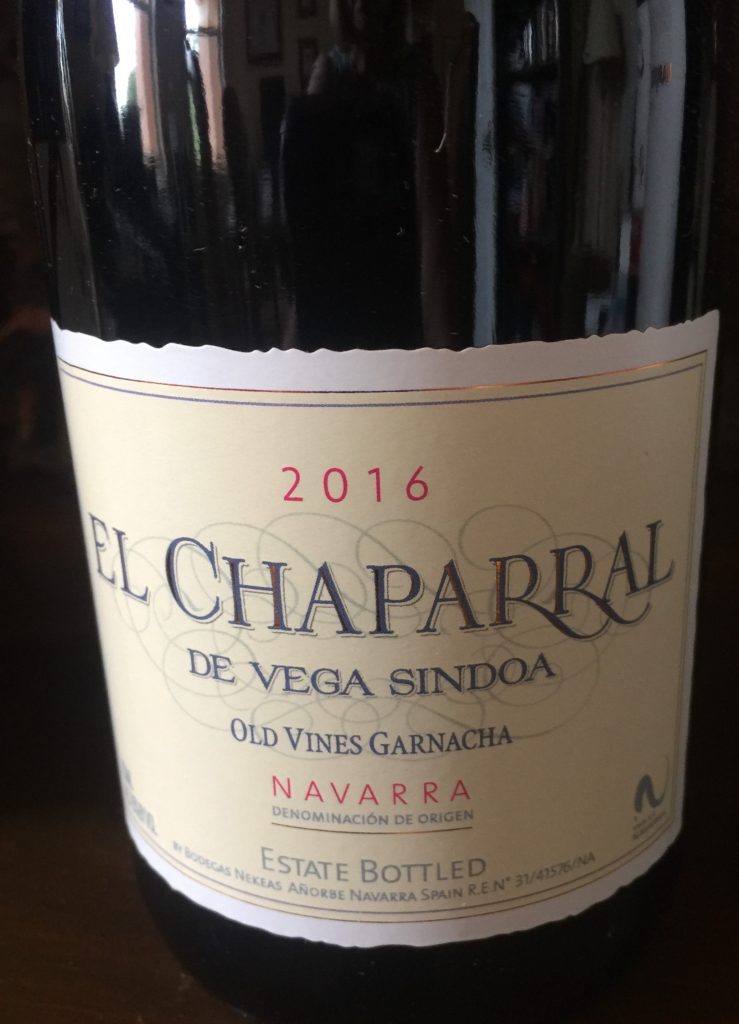
Vino de Pago or is it “Wines of Payment”?
Navarra participates in a Spanish wine classification first introduced in 2003 called Vino de Pago. Vino de Pago (pago means “estate”) refers to the Vineyard and Wine Act 24/2003 of July 10th which is the highest category existing within Spanish wine law. It covers individual wine estates usually associated with top-quality wines that were typically not covered by a DO status. These estates must be small – meaning not equal to or larger than any parish in the Region; they must have unique characteristics in soil and micro-climate enough so that they are differentiated from surrounding sites; and their wines must be distinctive with singular qualities. Vino de Pago can also have a DO or DOC status if they meet those particular requirements.
The Spanish word “payment” comes from the Latin word “pagus” which means a country district. Their were 17 Wines of Payment as of 2017. This classification was similar to the emergence of “Super Tuscan” wineries in italy, and it is still quite controversial. Fewer than half of Spain’s regions ratified the legislation . Navarra did; however Rioja chose not to do so. Rioja now has the new classification Viñedos Singulares which was recently added to focus on single vineyard sites in Rioja.
Pago de Arinzano, Pago de Otazu and Prado de Irache are examples of Vino de Pagos in Navarra. Arinzano is a 740 acre estate located in the municipality of Aberin (Merindad de Estella) . It was purchased by the Chivite family in 1988 and operates as Bodegas Chivite. Pago de Otazu is in Cuenca de Pamplona, less than 7 miles west of Pamplona. Prado de Irache is located near the town of Estella.
The critics of this category will tell you that some of the wines have remained outstanding while several have not. The term “Vino de Pago” is not legally restricted; any winery can use the word Pago in their name. So try the wine and know there are no guarantees. Drink what you like!
Crossing into Rioja…………Navarre is also part of D.O. Rioja and Rioja DOCa
Because of the close proximity to its southern neighbor, part of Navarre also falls under the D.O. Rioja, Baja sub-zone. Navarre has a total of 6,220 hectares in Rioja Baja and a choice of reds, rosés and whites along the Ebro River. A small section of Navarra is also classified as Rioja DOCa. Denominación de Origen (DO) and Denominación de Origen Calificada (DOCa) are the two highest Spanish categories for quality wine. Rioja is one of only two winemaking regions in Spain to have received the prestigious DOCa classification, the other being Priorato.
DOCa Rioja Alavesa …….yet another part of Basque Country
DOCa Rioja Alavesa is a subzone of D.O. Rioja that has vineyards in the south of the Basque Country. Vineyards are planted on the banks of the Ebro River at 1150-1600 feet altitude. Around 80% of the subzone is planted in Tempranillo grapes with 4% dedicated to other red grapes and the rest to several varieties of white grapes. Just to create more confusion, this is the same geographical area as the D.O. Arabako Txakolina which is officially part of Basque Country.
The Prestigious La Rioja
By now it must be obvious that we cannot talk about Southern Basque Country without digging into La Rioja. D.O. Rioja is one of the four main wine producing areas of Northern Spain; the other three being Galicia, Catalonia and Ribera del Duera. The DO Rioja wine region includes municipalities in three northeastern Spanish provinces: La Rioja, Navarra and Alava; however, most of the municipalities (116) vineyards (41,000 plus hectares) and wineries (320) are located in the autonomous community of La Rioja.
There are over 70 Designations of Origin (Denominaciones de Origen) used to classify Spanish wines. The better known is La Rioja for its red wine, but don’t underestimate the quality wines of Ribera del Duero in northern Spain or Jumilla in southern Spain. There are quality white wines especially in Galicia. Jerez is located in the south and known for sherry. Each area is unique with its own special wines. You can be sure that each area is rich in history and culture and has their own varied and delicious cuisine. We should add that other important wine regions of Spain are equally unique: the Penedes, Rias Baixas and the Priorat. And we can’t neglect the smaller regions including Bierzo, Calatayud and Campo de Borja, Castilla-La Mancha, Rueda and Toro.
You may think that Spanish wines will be really big and bold because of the really hot weather there, but some of the best vineyards are well over 1000 feet above sea level where temperatures are much cooler. Spain is actually the second most mountainous country in Europe after Switzerland. Still with all of those mountains, Spain has more vineyard acreage than any other nation — 2.5 million acres of them. Even with all of those vineyards, it is third in wine production after Italy and France.
One of the significant differences with Spanish winemakers in general is that they still prefer their indigenous grapes made in the “old ways” and the flavors that this brings to the wine. They also still prefer long aging in the barrel. While they don’t go for 25 years any more due to the change in modern taste, the highly regarded Rioja Gran Reserva, for example, is still barrel aged for 5 years.
Spain has a very long history of growing grapes and making wine. Grapes have been harvested and wine produced here in La Rioja dating back to the Phoenicians and the Celtiberians. Monks recorded the earliest written evidence of the existence of grapes here in 873, and viticulture was documented in 1063. Rioja wine was exported to other regions as early as the late 13th century. The first document to protect the wine quality was written in 1650.
History continues to tell about many old traditions; however, Rioja has been honored with several impressive “wine firsts”. In 1925 it was the first wine region in Spain to receive a D.O. designation (guaranteed by the “Denomination of Origen” D.O.) Fast forward through the years to 1991 when the prestigious “Calificada” or Qualified nomination reserved for producing Spain’s finest wine was presented to La Rioja, now the first DOCa of Spain.
Those old traditions get a new twist!
Rioja wines account for a large share of Spanish wine sold in the US, according to Ana Fabiano, the trade director and North American brand ambassador for the region. “Change in an old-world wine region does not happen frequently” was a very significant comment made at an early 2019 press conference in New York to present the newest marketing campaign and changes in classifications. It was reported by Ms Fabiano that the US bought more than 1.1 million cases of Rioja wine in 2018, and it is hoped that we will buy around 2 million cases annually in the next several years. Their new global marketing campaign is Saber Quien Eres or “Know Who You Are”. Ms. Fabiano summed it up this way “Rioja is looking to the future, but is standing in the history of her soil”. (From a Forbes article of 2.15.2019 “Will Rioja Wine Increase its Market Share?” by Mike DeSimone and Jeff Jenssen.)
The grapes of Rioja and Navarra
Let’s start with the grapes. According to the latest issue of Madeline Puckette’s “Wine Folly” Magnum Edition, there are 100 common varieties of grapes in Spain, the country with the highest vineyard acreage in the world. The most widely planted and/or best known varieties from the 5500 Spanish bodegas (wineries) and cooperatives are Airén (white), Tempranillo (red) and Albarino (white) from Rias Baixas and Parellada, a white grape from the Penedès wine region in Catalonia used to make Cava.
Airén is the most widely planted grape variety in Spain accounting for 22% of the vineyards; and is most notably planted throughout Central Spain due to its tolerance for hot, dry conditions and poor soil. Airén is very resistant to diseases and makes a “snappy crisp white”. It is often used for blending but sometimes vinified to make red wine. Airén is also distilled to make a spirit.
Traditional varieties
In 2017, the Rioja harvest consisted of 88% red grapes even though since 1925 there have been seven traditional authorized grape varieties – four red and three white. They are:
RED GRAPES
Tempranillo is the best loved and the most prized Spanish grape. Tempranillo is to Spain like Cabernet is to Bordeaux! This variety is the fifth most cultivated variety in the world, covering 231,000 hectares in 2015. It may be found in 17 other countries, but 88% of it is cultivated in Spain. This is a grape that buds early, ripens early and has a short growing cycle. Not without some problems, it is susceptible to mildew and sensitive to extreme drought and wind, but it is very vigorous and well suited to growing here. Tempranillo makes a deeply colored wine with high alcohol content and low acidity. Synonyms for Tempranillo include Tinta Roriz, Tinto Fino and Tinto del Pais.
Garnacha Tinta (Grenache Noir) is one of the most widely planted grapes in the world with 163,000 hectares in 2015. It was thought to be introduced from Spain to France during the Middle Ages. Spain and France account for 87% of the world’s Garnacha. This variety gives a good yield, is extremely drought resistant and adapts to different soils although it does not come without a lot of susceptibilities that make it a challenge to grow. It is generally spicy with notes of cinnamon and white pepper, red berry-flavors, soft on the palate and makes relatively high alcohol wine. You may get more leather and tar flavors with age. It is often used as a blending grape – Chateauneuf-du-Pape and GSM – for example. The grape tastes different depending upon where it is grown. In France, Southern Rhone Grenache-based wines have more smoky herbal notes including oregano, lavender and tobacco while American Grenache smells more like licorice and flowers. But in northern Spain where it is warmer, the grapes can get very high sugar levels adding both body and spice. It tends to express the place where it is grown, especially in Navarra. In fact, it has been noted by some winemakers as the “Pinot Noir of Spain” and the signature grape of the region which is quite a step up as it used to be considered a workhorse variety. Today it is the third most widely planted grape in Spain (behind Tempranillo and Bobal). Garnacha Tinta has many aliases, but its known as Cannonau and Tocai Rosso in Italy.
Mazuelo (Cariñena/Carignan) is a black-skinned grape of Spanish origin often found in Spanish and French wine but is widely planted throughout the western Mediterranean and around the world. It’s most common use is for blending with other grapes in northeastern Spain and in France’s Languedoc-Roussillon where it is most often blended with Grenache, Syrah and Mourvέdre. Winemakers of Rioja use Mazuelo to add acidity to their Tempranillo-based wines. It expresses high tannins, acid and color which makes it an excellent choice for blending. When used to make a varietal wine, it shows rich dark and black fruits, pepper, licorice and spicy savory accents. It is also prominent on the island of Sardinia where it’s known as Carignano. This is yet another one of those grapes that was considered low-quality and fell out of favor until some producers started to bring it back to life. Mazuelo or Carignan can be a perfect food wine with its balance of flavors and no bitter tannins. It has earthy meaty notes that make it a good partner for everything from turkey to duck to bacon and cheeses like Gouda, Basque and Manchego. In the US, it was once the third most widely planted grape variety in California where it was a big part of the California jug and box wine industry.
Graciano is a small black-skinned grape grown primarily in Navarra and Rioja although there is now a bit of it to be found in California and Australia. A small amount of it is also grown in Languedoc under the name of Morrastel. Graciano grapes make a moderately tannic, deeply colored intensely perfumed wine with aromas of mulberry, violets and chocolate. These characteristics make it very popular with winemakers of Rioja who use it mostly in the Rioja bland with Tempranillo and Garnacha. Graciano vines are quite susceptible to mildew and on top of that, are very low-yielding which is why they have been unpopular. However like everything else that goes out of style, it is now gaining a following as a single varietal wine both in Rioja and Navarra.
Red grapes make up about 95% of all vines planted in the Navarra DO although this percentage is decreasing somewhat as more whites are planted. Tempranillo, Garnacha, Mazuelo and Graciano are also the significant reds there with the addition of some Cabernet Sauvignon.
WHITE GRAPES
Viura (Macabeo) can be found in both the French and Spanish Basque Country vineyards; however it is the most important white grape of La Rioja. Viura is key to Rioja Blanco and may be blended with some other varieties such as Malvasia, Garnacha Blanca, Chardonnay and Sauvignon Blanc. Early harvest will make wines aged in stainless steel that are fresh, citrusy, floral with aromatic notes while late harvest wines are aged in oak and are honeyed, nutty and heavier body. The fact that it is a very versatile grape makes it perfect for still, sparkling, dry and sweet wines. Viura, or Macabeo as it is more commonly known in Spain, is used in Catalonia to make the traditional method sparkling wine Cava, where it is blended primarily with Parellada and Xarel-lo. Viura is widely planted throughout Spain and considerably planted in the Languedoc-Roussillon region of Southern France. The Roussillon winemakers use it in the sweet wines of Banyuls and Maury and the rich dry wines of Corbieres and Minervois.
Malvasia is a versatile white grape capable of producing wines in dry, sparkling or sweet styles. It is now grown in Spain, Portugal, Italy, Croatia, Slovenia, Greece and the US. Even the Malmsey wine on the Portuguese island of Madeira is made from Malvasia. There are many sub-varieties grown in Douro, Portugal sometimes used to make white Port. But in Rioja and Navarra, it adds body weight and texture when blended with Viura to make White Rioja Blend. Malvasia was more dominant in White Rioja wine prior to the arrival of phylloxerra when it made oak-aged rich alcoholic wines. Then along came the 1960s and the increase of Viura which is perfect for crisper lighter whites.
Garnacha Blanca (Grenache Blanc) is a light-skinned mutation of Grenache Noir and native to northern Spain but best known for its part in French white wines particularly as one of the grapes allowed in Chateauneuf-du-Pape. It makes light golden straw-colored juice often used in a blend; however it is increasingly used to make a varietal wine. In Spain you will mainly find it along the Pyrenees, Navarra and Catalonia in particular. It is permitted in the white wines of Rioja.
The main white varieties of the Navarra DO are Viura, Garnacha Blanca, Malvasia and Chardonnay.
Newer authorized varieties
In 2007, the Regulating Council of the DOCa approved these additional varieties: Indigenous reds: Maturana Tinta (also called Maturana Parda or Maturano) and Autochthonous varieties – Whites: Maturana Blanca, Tempranillo Blanco and Turruntés or Torrontés (which is different than that planted in rest of the world) and the Foreign varieties of Chardonnay, Sauvignon Blanc and Verdejo.
The classifications
And how are wines of Rioja classified? You have probably noticed by now that the wine world is very slow to make any major changes, but in 2018 that is exactly what happened in Rioja. The Rioja Consejo Regulador released a new classification system!
We already have talked about the quality or regulated classifications, the most common terms of DO and DOCa, which is an appellation classification system somewhat similar to both France and Italy. Spain also has two “unregulated” label designations referred to as “country wine” and “table wine.”
Denominación de Origen (DO) includes wines that are sourced only from the designated growing regions and meet specific criteria and quality standards. These are good quality wines from over 60 Spanish wine regions usually offered at reasonable prices.
Denominación de Origen (DOC) “DOCa”, which is similar to the Italian DOCG, is the strictest classification representing the highest quality wines offered from Spain. There are only two regions with this honor to date: Rioja, which was first to be awarded, and Priorat, the second.
There is also the designation of “Vino de la Tierra” or “wines of the land” used for categorizing and naming Spanish wines that are not in DO designated growing regions. The label designation “Vino de la Tierra” romantically translates to “wines of the land” or “country wines.” Wines that don’t fall into any of the categories are called “Vino de Mesa” or “table wine” status.
For many years, the D.O. Rioja classification of wines has taken this a step further to assign a quality level to their wine. Their quality level has been based on the length of time the wine remains in the barrel. It must remain in 225-liter oak barrels for 1 to 3 years, and then in the bottle itself for 6 more months to 6 years. These are the specific levels of aging time which include the latest revisions:
Crianza: Red wines must be aged in oak barrels and bottles for a minimum of 2 years. This is the youngest of red wines with a minimum of 1 year in the barrel. Whites and rosés need only 6 months in the barrel. You can expect some red fruit flavors and subtle spices from the Tempranillo.
Reserva: Reds must be aged in oak and bottle for a minimum of 3 years with at least one year in the barrel and 6 months in barrels. Whites and rosés require 2 years minimum in oak and bottles, 6 months of which must be in oak barrels. Reserva makes for great balanced red wines with some subtle aged flavors of spice and dried fruit.
Gran Reserva: These are usually wines made from exceptional vintages. Total aging for red must be 5 years including a minimum of 2 years in oak and at least 2 years in the bottle. Whites and rosés need at least 5 years aging but just a 6 month minimum in barrels.
Gran Añada: A new aging classification was added in 2018 to be used for sparkling wine. Sparkling wine must spend at least 3 years on the lees and age for at least 15 months. Vintage wines must be hand-harvested.
Generic (Joven): This classification was previously called cosecha or harvest and was used for young wines. There is no aging requirement; you can expect minimum use of oak. In the past, these wines were the lowest indication of quality; however, you may now see some much higher quality wines in this classification especially some Rioja Blanco made with Viura grapes
Viñedos Singulares
The most significant change is the addition of a completely new category called Viñedos Singulares. This category was added to encourage greater focus on single vineyard sites and promote the differences in regional microclimates. This system, which is similar to grading in Burgundy, now focuses on terroir! This change came after a long-running battle between the Regulatory Council of the DOCa and over 150 producers who argued that major changes were necessary to promote the value of quality over quantity and point out the differentiation in soils. Yes, they still have the same three levels of aging, but now the winemaker can add the name of the village or municipality of origin to the front label on the bottle. All 145 of them in Rioja!
Here’s what to look for on the bottle from those who use this new category. The label on the front has to indicate the name of the vineyard which must be registered as a brand. The term “Viñedo Singular” must appear directly underneath the vineyard name. The guarantee seal on the back of the bottle might read “Crianza Viñedo Singular” or “Gran Reserva Viñedo Singular”. There are some additional specifications to ensure the quality of wine in the bottle — the vineyards must be at least 35 years old, grapes have to be hand-picked, yields relatively low, and the wines have to pass a certification test by a regional tasting committee before marketing. So far there are 76 applications for this category from 44 wineries and growers.
The Vinos de Zonas
The second part of this major change is the use of “Vinos de Municipio” and “Vinos de Zona”. The use of these terms has been permitted since 1998; however the sub-regions of Rioja are now known as Zonas. The sub-regions of Rioja Alta, Rioja Alavesa and Rioja Oriental and Municipios (municipalities)/Pueblos (villages and towns) can now be identified on the label in the same text size as Rioja instead of just two-thirds as before. 85% of the grapes in the bottle must come from the Zona or Municipio indicated.
Rioja used to be fairly easy to learn about as wine regions go. It had just one appellation for the entire 210 square mile region with over 150,000 acres of vineyards. It did however have three sub-zones based upon a variety of terroirs and climates. Then the Rioja Regulatory Council decided to be a bit more specific and officially divided the region into three zonas (zones) and allow the name of the zone to appear right on the wine label just below the word Rioja and even in the same type size!
The D.O. Rioja region is now officially divided into 3 sub-zones and can be named on the bottle:
Rioja Alta (High)
Occupies the westernmost portion of the region with most of its vineyards west of Logroño on the south bank of the Ebro River and a small area on the north bank around the villages of Abalos and San Vicente de la Sonsierra. All vineyards are within the province of La Rioja. Tempranillo thrives here along with other important grapes, Graciano and Garnacha. Wines from this subzone are usually elegant, lighter in body and lower in acid. Some producers of note here are Muga, Marqués de Murrieta, La Rioja Alta and Marqués de Cáceres.
Compañía Vinícola del Norte de España
………is better known as CVNE which is confusing since most people know it as “Cune” ………pronounced COO – nay. The CVNE winery, or whatever name you prefer, was founded in Haro, La Rioja, in the year 1879 by two brothers Eusebio and Raimundo Real de Asúa. Since 1879 CVNE has grown to 545 hectares of vineyards and three bodegas or wineries each with its own winery and winemaker. CVNE sits near the railroad tracks in Haro which was important to get their wines out to Bilbao and beyond. CVNE is the largest of the three, only uses grapes grown or purchased in the Rioja Alta subzone and packages the wines in a Bordeaux-style bottle. The Imperial cellar is an independent winery inside the original CVNE winery. Viña Real is a Rioja Alavesa brand that uses a Burgundy bottle and made their first vintage in 1920. The new Viña Real winery in Laguardia was completed in 2004 and is probably the most advanced winery in Spain. Then there is Viñedos del Contino in Laserna which only makes wine from its own 62 hectares of vineyards in the Rioja Alavesa.
The company’s bottom line thrives on the production of lots of Crianza classified wine, particularly CVNE Crianza which is labeled “Cune”. An early misspelling of CVNE caused this wine to forever be known as Cune. At the other end of the spectrum, the CVNE 2004 Imperial Gran Reserva was selected as the Wine Spectator number one wine of the annual Top 100 in December 2013. Real de Asúa, named after the two founders, had its first vintage in 1994. The wines of CVNE now include: CUNE, Imperial, Monopole, Real de Asúa, Viña Real, Pagos de Viña Real and Contino. CVNE celebrated its 140th anniversary in 2019 with the launch of its newest winery called Bela. Bela is an avant garde winery located in Villalba del Duero with 74 hectares of vineyards. Their first wine produced was Bela Roble 2017, a 100% Tempranillo.
CVNE has had some prominent milestones in Spanish winemaking including the use of a pasteurizer device, “El Carmen” the largest all-concrete winemaking facility of its day in Spain which was set up in 1940, and in 1989 use of “El Pilar”, a gravity-driven winemaking facility, began. Eiffel’s Cellar was designed by the legendary French architect, Alexandre-Gustave Eiffel.
CVNE Rioja Monopole Clasico Blanco Seco 2015, La Rioja Alta
Monopole was the oldest registered white-wine brand in Spain and first produced by CVNE in 1915. Monopole was one of CVNE’s main wines from the early 20th century to the 1970s when it fell out of fashion, sales fell and production ceased in the 1980s. It was fresh and bone dry with some barrel aging and the addition of some Sherry wine. Some years ago a lone bottle of 1979 Monopole was found in the cellar. Upon tasting it was found to be savory, fresh, balanced and delicious! And Monopole production was reborn in 2014 after a 35 year gap!!! Today it is unoaked and made entirely from Viura with a tiny bit (5%) of Manzanilla Sherry added. Our bottle of 2015 Monopole Clasico Blanco Seco was made from hand harvested grapes put into concrete tanks; then into stainless steel for alcoholic fermentation. Then it went with its lees into vats and previously used botas for about 8 months aging. When we taste it, we expect straw yellow color with slightly golden notes, complex aromatics including gooseberry, apple and chamomile flowers. It should be elegant with saline notes and a long slightly acidic finish. The alcohol content is 13.5%. Tim Atkin rated it 94 points and Robert Parker gave it 92. VinePair rated it as their #17 wine in their Top 50 of 2018.
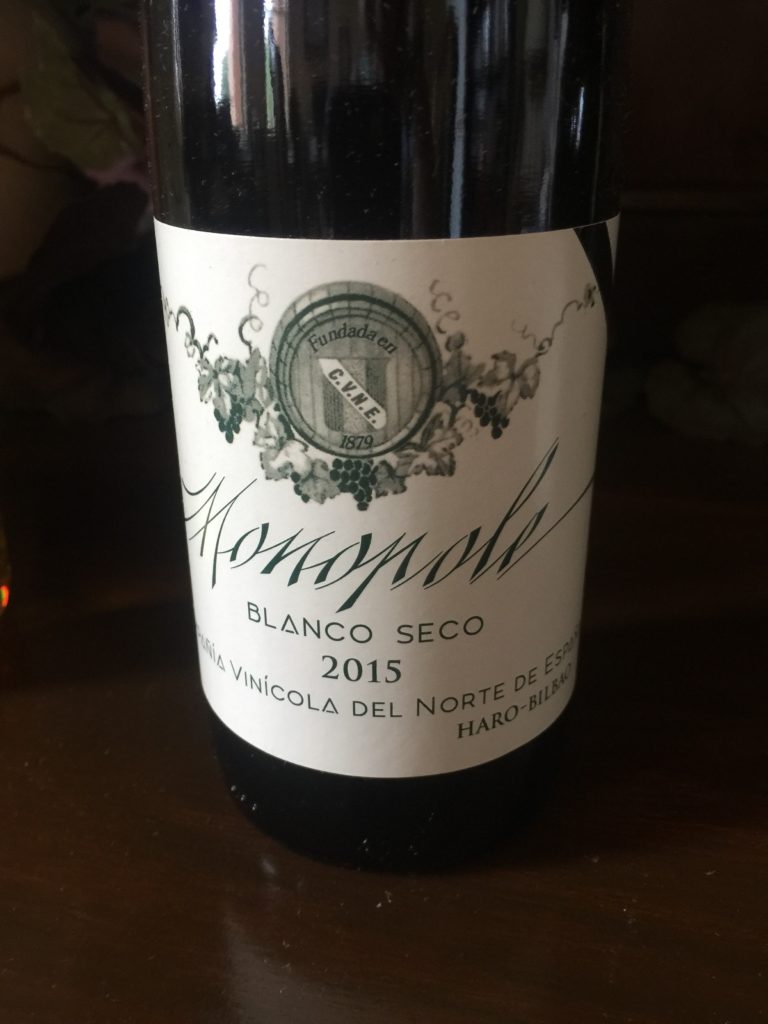
R. López de Heredia Bodega
Don Rafael López de Heredia y Landeta was an enthusiastic student in the art of wine making who fell in love with the area around Haro in the Rioja Alta region. Around 1877 he began the complex now known as the López de Heredia Bodega, the oldest in Haro, one of the first three bodegas in the Rioja region and today is one of the most traditional. Today the estate covers 53,000 square meters which includes over 65,000 square feet of cellar space, up to 200 meters long and 15 meters below ground. The many cellars include the “El Calado Cellar”, which was built in 1892 with a main gallery 215 meters long stretching towards the Ebro River. Bodega Vieja, the “old cellar”, is used as the bottle vault plus the Bodega de Reservas aging area, home to very select wines. The “new cellar” Bodega Nueva was completed in 1907. “The Cemetery” is their private wine cellar. There are almost 13,000 Bordeaux oak barrels stored in those cellars. There are also 72 oak vats ranging in size from 60 hectoliters to 640 hectoliters. And they have their own cooperage! They are one of the few Spanish bodegas crafting their own barrels.
When Don Rafael first established the bodega, he decided he couldn’t make outstanding wine without the best of materials to work with including the vineyards. Therefore he founded what many people consider the most famous vineyard in Rioja – Viña Tondonia. Over 247 acres of Tondonia is on alluvial and limestone soil along the Ebro River which also serves as the border to the Rioja Alavesa sub-region further north. The top Reserva and Gran Reserva wines come from Tondonia. Today the bodega owns 180 hectares (445 acres) of land with 110 currently in production. This includes the additional vineyards of Viña Cubillo, Viña Bosconia and Viña Zaconia. They use only estate grapes and practice organic farming. Lopez de Heredia has preferred to stay true to their roots and traditions unlike Spain’s growing number of new-wave producers with modern technology and new French oak. All of their wines begin in the 72 large oak vats, some of which are 139 years old, then on to a long aging in 14,000 handmade American oak barrels. They are frequently racked, fined with egg whites and are bottled without filtration. They produce a wide range of red wines at different price points. Vino Cubillo is younger with a healthy addition of Garnacha; Bosconia Reserva and Gran Reservas are richer and more complex. The Tondonia Reserva and Gran Reserva receive the most critical acclaim and are made from the standard Tondonia blend of Tempranillo, Garnacha, Graciano and Mazuelo. Tondonia also stands out with aged and complex white Riojas and produces some Tondonia Blanco from a small section of Viura and Malvasia. The smooth, elegant and delicious Viña Gravonia wine comes from the 59 acres of Viura grapes planted at Viña Zaconia. About 25,000 cases of wine are produced annually.
R. Lopez de Heredia Rioja Blanco Viña Gravonia 2009 La Rioja Alta Calificada Rioja DOC
Viña Gravonia is made from 100% Viura grapes. The 2009 is a year officially rated as VERY GOOD. It was barrel aged four years, being racked twice per year and fined with fresh egg whites. Then it rested in the bottle unfiltered at 12.5 % alcohol. 13,100 bottles were made. We expect it to be fresh and aromatic, complex and developed with some candied citrus and honeycomb, dried pear, quince, and fresh almond well balanced with a long finish. This wine is a great example of traditional style. James Suckling and Wine Spectator both scored it at 94 points.
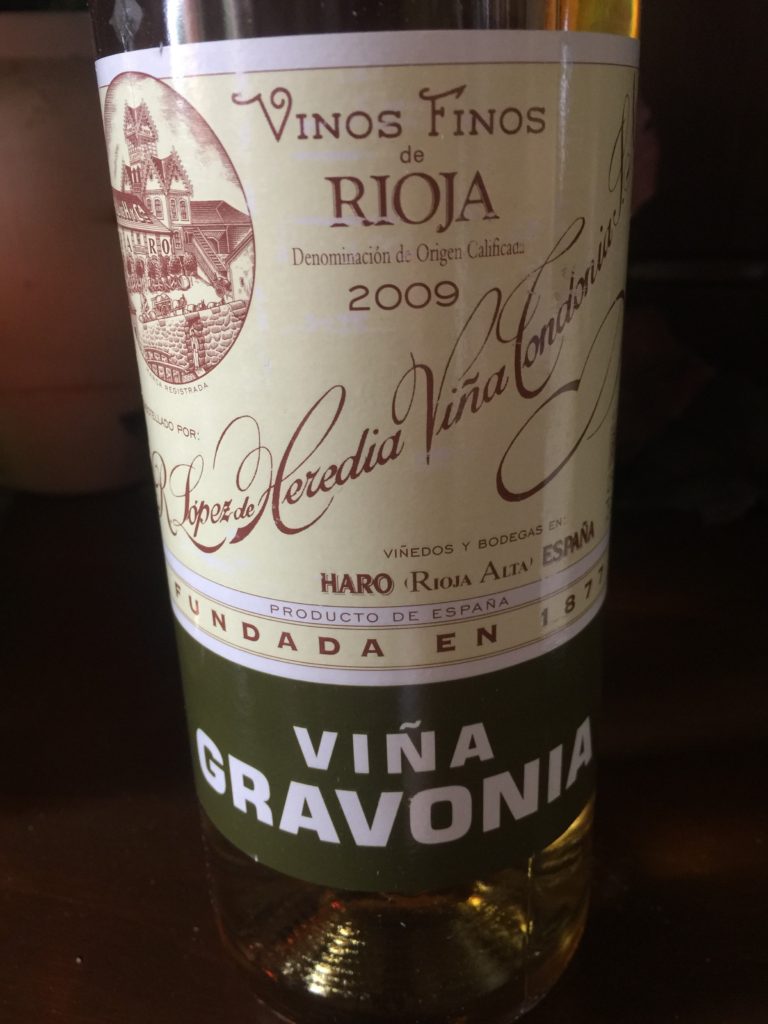
CUNE CVNE Rioja Gran Reserva 2010 La Rioja Alta Calificada Rioja DOC
The CUNE Gran Reserva is made from hand selected grapes in their vineyards in Rioja Alta. It’s a blend of 85% Tempranillo, 10% Graciano and 5% Mazuelo. The wine was aged in American and French oak for two years and three more years in the bottle and has an alcohol content of 13.6%. Our wine should be maroon in color with a perfect balance between ripe black fruit and aromas of vanilla, toffee, leather and tar. It should be nicely rounded with balanced tannins; however there will probably be less finesse than in the Gran Reservas from Imperial, Viña Real and Contino. 50,000 bottles were produced. But with scores of 94 points WS, 92 points WE and 91 points Robert Parker, how bad can it be? Wine Spectator also selected it as their #22 wine in the Top 100 of 2016. Sounds like a winner to me!
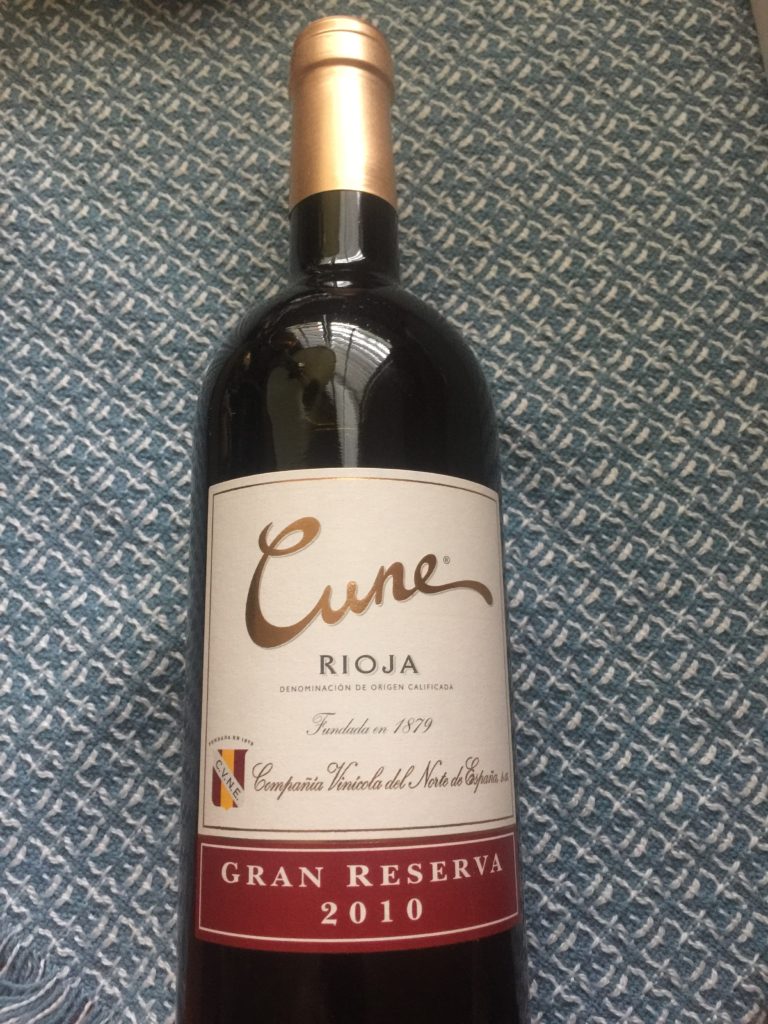
Bodegas Marques de Murrieta
Marques de Murrieta was founded in 1852 near Logrono in the Rioja region. Then in 1872 Peruvian –born Luciano de Murrieta y Garcia-Lemoine purchased the Castillo Ygay estate which is still where they produce the wines. This became the first estate in Rioja to export their wine. Murrieta was somewhat of an innovator – he was the first person in Rioja to age his top red wines in oak barrels similar to Bordeaux. Up until then, the wines were sold in the same year as production. He was also one of the first to start exporting wines. Then the company lost its luster and was later bought by Vicente Cebrián Sagarriga. It is now run by his son, Vicente Dalman Cebrián.. Today Murrieta is the largest single estate in the region with 750 acres divided into 28 separate plots growing all of their own grapes mainly Tempranillo with smaller amounts of Garnacha, Viura, Mazuelo, Graciano and Cabernet Sauvignon. The current owner also has an estate in Rias Baixas and a history of making white wines. Maybe that is why Ygay also makes two whites. The main focus still remains its Reserva, which makes up 85% of production and made from the typical Rioja red Tempranillo blend. The winemaker, Maria Vargas, is one of the highest profile women winemakers in Rioja. The Rioja Reserva has been shifting gradually towards a more fruit-driven terroir style of wine with a little higher percentage of Garnacha and Graciano. This allows the Gran Reserva to better show off the characteristics of aging. In 2016 they started making a more modern rosé further proving that Murrieta is not totally focused on tradition.
Marques de Murrieta Rioja Ygay Reserva 2014 La Rioja Alta Calificada Rioja DOC
The Murrieta Rioja Reserva is made from a blend of Tempranillo 84%, Graciano 9%, Mazuelo 5%, and Garnacha 2% all grown on the 741-acre Ygay Estate in Rioja Alta. The grapes were de-stemmed then fermented in stainless steel tanks under controlled temperature for 8 days in constant skin contact. The wine is aged for 19 months in 225 liter American oak barrels. 2014 was a somewhat challenging vintage; however it still received 94 points from Tim Atkins, 93 from Robert Parker and 92 Wine Spectator. We are expecting to taste a great bottle of Murrieta upon opening! We will look for red cherries and some aromatic herbs on the nose, a velvety texture with round tannins and a subtle finish. 900,000 bottles were produced.
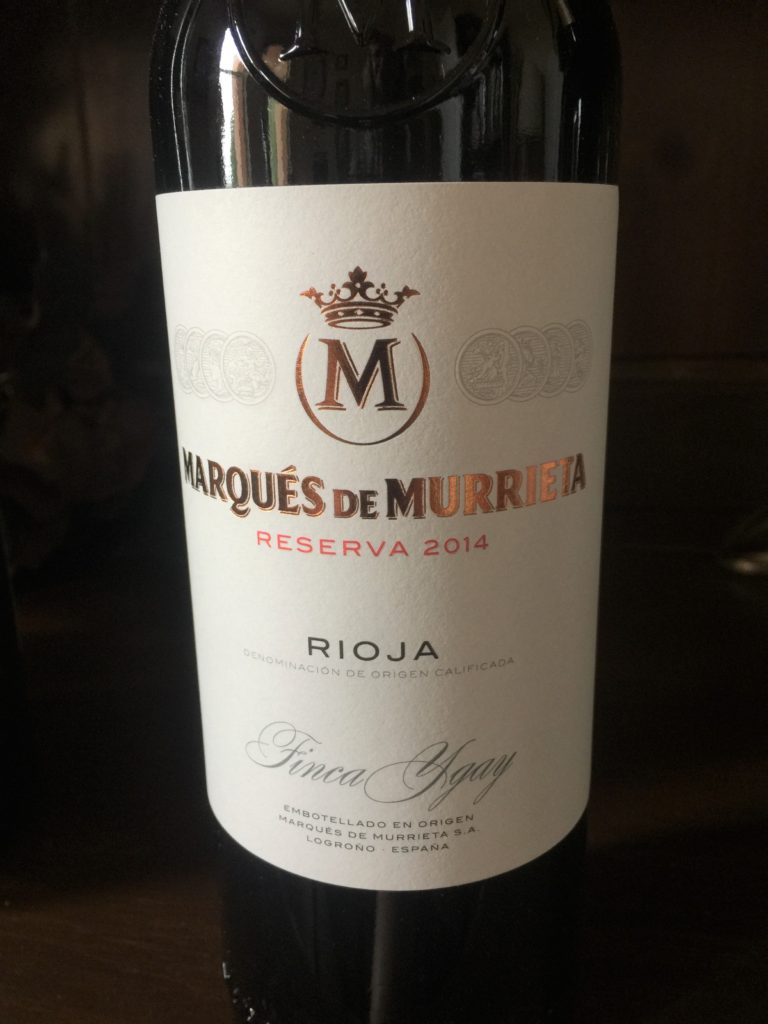
Rioja Oriental (Eastern Rioja)
Previously known as Rioja Baja (Low), this is the area east of Logrono on both banks of the Ebro and lower in altitude. Interestingly enough, most of the vineyards on the north side of Rioja Oriental actually lie within the province of Navarra. This makes up the largest portion of D.O. Rioja and represents 40% of its wine production. This zone has very dry and warm summers with large proportions of silt and alluvial as well as ferrous clay soils. Garnacha and Tempranillo are both grown here. The wine industry here is largely made up of cooperatives. When previously named Baja, producers thought the name meaning “low” denigrated the image of their wine. So in 2017 the DOCa Rioja approved the name change to Rioja Oriental. This name did not go over well with many both inside Spain and US, but the name is now official.
Rioja Alavesa (In Basque Country)
This is the smallest of the three subzones and is located on the north bank of the Ebro River that lies entirely within the province of Alava in the Basque Country. Alava is within the autonomous community of Pais Vasco (Basque Country). In 1998 Alavesa was permitted to label wines Rioja Alavesa if made from Alavesa grapes and bottled in Alavesa. Alavesa’s climate, soil and style is similar to Alta and the two of them are considered to produce the best wines of the region. Tempranillo is the main grape along with Garnacha, Mazuelo and Graciano used for blending. Some Viura is also produced. A producer of note is Marqués de Riscal.
The Vino de Municipios
There are 144 authorized Municipios or villages in the DOCa. 85% of the grapes in the bottle must come from the named Municipio. The rest can come from a neighboring Municipio. 49 wineries and 20 Municipios have requested this labeling designation so far out of the current 145 municipalities. It is still unknown which ones will emerge as standouts.
Single varietal white wines
There are even more changes. Single-varietal white wines may now be sold under the Rioja Blanco label. The amount of white grapes planted has increased to approximately 1500 hectares and close to 8% of total Rioja sales, an increase from 5% just 5 years ago as white Rioja wines have gained in international prominence. Single varietal wines can now be produced from any of the permitted grape varieties.
Espumosos de Calidad de Rioja
For the first time ever Rioja has a sparkling wine designation. It’s called Espumosos de Calidad de Rioja, somewhat similar to Champagne, must be by the traditional method and must age for at least 15 months. It can be made from white or rosé wines produced from any of the native grapes of Rioja. The first vintages will be released beginning the year of 2019, and must be labeled “Método tradicional” Brut, Extra Brut and Brut Nature.
There’s a new aging classification added in 2018 named “Gran Añada” to go along with the new sparkling wine designation. Sparkling wine must spend at least 3 years on the lees and age for at least 15 months. Vintage wines must be hand-harvested. Hopefully this new classification will not be confused with the existing Cava sparkling wines.
Rosado or Rosé wines
Rosé or “rosado” wines can now be made in a lighter color since it appears that the lighter color rosés of Provencal have been much more successful in the market than a Spanish rosado.
Bodegas Muga
You can find Bodega Muga in Haro located in the Alta subzone of Rioja. It is among some of the oldest wine ventures in Rioja and is considered one of the region’s most important winemaking families even if it is less than 100 years old! Muga was established in 1932 and moved to its current location in 1970. Their 70,000 hectares of vineyards can produce around 2 million bottles of very high quality wines annually. It’s still family owned, and now the third generation is leading the charge. They have led the modernization of the winery during the last few decades in which Rioja has become transformed during this time as well. Muga still makes extremely classical wines with malolactic fermentation and aging performed in oak and egg whites used for fining. The reds are fermented in oak vats (each one of their big tanks can hold 55,000 liters), aged in American oak casks, and then racked every four months. You won’t find any stainless steel tanks here! They are also one of the few wineries with their own cooperage, so if you are in the Haro area, Muga is definitely worth a visit. The Mugas go to France every winter to personally inspect the trees and select them for their barrels. They use 100% indigenous yeasts and rack by gravity. The wine is inspected by candlelight during racking to watch for sediments. Muga makes classical Crianza, Reserva and Prado Enea Gran Reserva, the Prado Enea being made from high altitude vines close to the boundaries of the western end of Rioja or Alavesa in the Basque Country. This makes perfect sense as ‘Muga’ actually means “border” in Basque. It is also well-known for “Torre” Muga and “Aro” Muga. James Suckling gave the 2016 Aro 100 points! Not to mention the 99 points for the 2011 Prado Enea and 98 for the 2016 Torre.
Winemaker Jorge Muga has been working with grapes other than their main grape, Tempranillo – he puts around 20-30% of Garnacha, Graciano and Mazuelo in his Tempranillo blend. He also barrel-ferments a white made from Viura with a bit of Malvasia. Muga makes Cava Conde de Haro from Viura and several Rosados. Muga Rosado is made from a blend of Garnacha, Viura and Tempranillo grown in the upper Najerilla Valley, one of the 7 valleys in the Rioja wine region which is known for its very old vineyards with Tempranillo and Garnacha vines between 80-100 years old. The extra special Flor de Muga Rosé is made from 100% Grenache grapes grown in specially selected plots. On a personal note, I can still recall that very first bottle of Rosé that I ever drank – it was a Muga Rosado! And I loved it!
As previously mentioned, with the change in classifications from the Rioja Consejo Regulador, rosado or rosés can now be made in a lighter color more closely resembling the rosés of Provence. You can now expect to see Muga rosés with a very pale pink color.
Bodegas Muga Flor de Muga Rosé 2017
The first thing you will notice when looking at a bottle of Muga “Flor de Muga”, or “Wine Flower of Muga” Rosé, is the very pale pink color of the wine not at all unlike a Provence Rosé but quite different from the salmon color Artazu Rosado of Navarro. The Flor de Muga is made from specially selected plots of 70-90 year old Grenache grapevines growing at 600-750 meters altitude. The soils in the upper Najerilla Valley are made up of clay-limestone and red iron-clay soil. The grapes are handpicked, given short 12 hour skin contact maceration and only 50% of the purest free run juices are used. They are fermented in very small oak vats for 15-20 days; then kept on its lees for at least 4 months. The result is a light pale rosé with an elegant fresh nose, hints of peach, strawberry and white flowers. It should have a full and fleshy palate with a long finish. The alcohol content is 13.5%. James Suckling 94 points; Wilfred Wong 93; Robert Parker 91; and Wine Spectator 90.
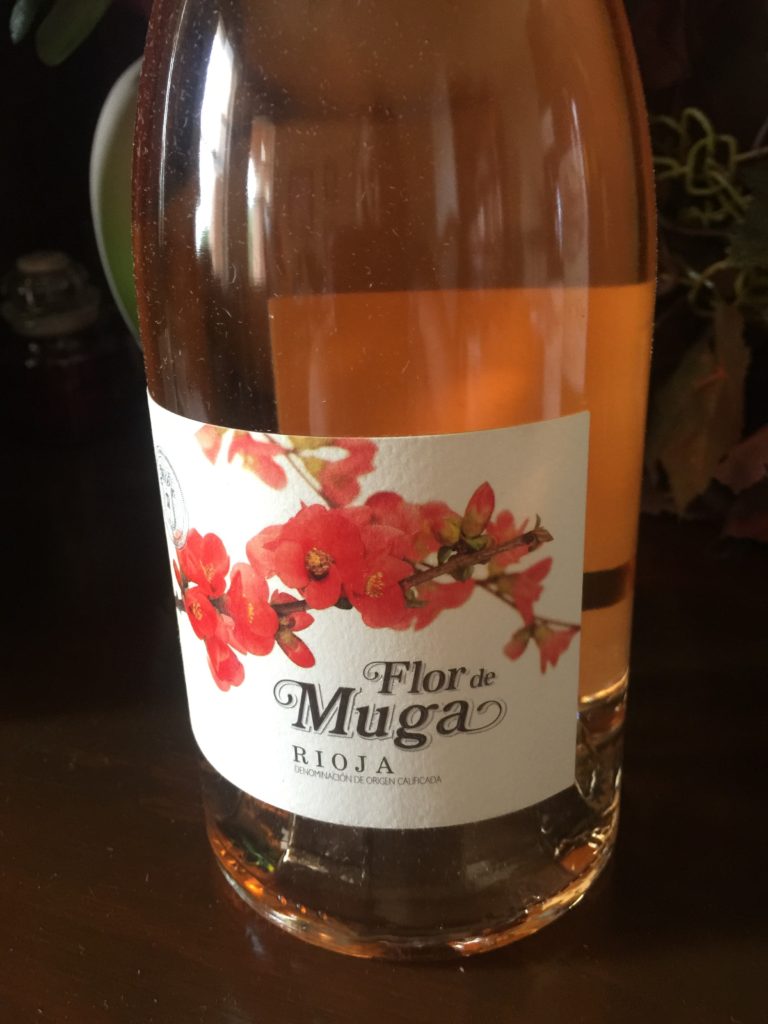
We have been “Basque…ing” in the Pyrenees!
That wraps up our latest forkandcorkdivine wine region “armchair” adventure. Our Basque Country travels are now complete. We covered a lot of territory! We have traveled between two countries, crossed the Pyrenees Mountains and visited seven different provinces of France and Spain that make up the ancient and exciting Basque Region. We have learned about a variety of grapes and wines – some probably quite unfamiliar to many of us – and others that many of us have known about for quite a few years. We’ve learned about the French Basque wine of the Irouleguy AOP including the Tannat blend and the lesser known Blanc blend of Gros and Petit Manseng and Courbu. Crossing the Pyrenees into Spain, most of us probably have never even heard of Txakoli wine and surely not the Hondarrabi Zuri or Beltza grapes unless we have visited the Basque Pais Vasco where you would most likely have enjoyed Pintxos with your Txakoli. On to another part of Basque Country – the Kingdom of Navarra. The wines of Navarra have traditionally showcased Rosados in the past, but Navarra is now coming into its own with a good selection of reds, whites and rosés. Then who hasn’t enjoyed the wines of La Rioja where Tempranillo is king? After all it even received the very first DOC status of Spain, and one of La Rioja’s three subzones is part of Basque Country. Some of the best red wines in the world have come from this part of Spain. And then there is the food! You can eat like a Basque shepherd in France and cook up some of Paula Wolfert’s delicious and famous Southwest France recipes or have a taste of everything by trying all of those Pintxos and Tapas like a true Spaniard.
The winemakers have various philosophies in Basque Country, just like we have learned about in so many other wine regions. While there are many who still embrace the traditional methods, there is a younger generation of winemakers attempting to modernize the industry. But quite often you will find the middle of the road is still most favored with just the right blend of the old traditions mixed with some new modern technology and ideas. And even better, the cost of wines from these areas are a pretty good value that will give you a great tasting experience without breaking the bank. Now that is something that this winelover can really appreciate!
So once again we repeat – be adventurous! Branch out a bit and try different wines. Drink the Txakoli and eat the Pintxos! You may just find out that you have really been missing out on a great experience. Forkandcorkdivine will be hosting a Basque Country wine dinner for a small group of our winelover foodie friends in the very near future. We will taste a number of wines from Basque Country (with a few extras from the rest of Rioja for good measure!) and we will pair them all appropriately with food that we lovingly prepare. Just in case you think that whipping up a little wine dinner menu is a quick and easy task, here is a humorous quote from my husband Chuck who is forced to endure (and yes assist!) throughout each one of these wine and culinary adventures:
“A wine dinner based on the Pyrenees
from Chuck Rakos
almost brought Linda to her knees.
Creating a menu that was Basque
was a monumental task,
but she did it with grace and ease”.
I don’t know about “grace and ease”, but I do know that I am passionate about the entire learning experience and can’t imagine how boring our life would be without it. You can be sure to read all about our Basque Country dinner – “Txakoli, Pintxos and Tapas” – in the next forkandcorkdivine article. And of course there will be many pictures of the food and wine. Then on to our next adventure – topic yet to be determined! Where would you go next?
All of the information that I used to prepare this article is available on the internet and the following books: “The wine Bible” by Karen MacNeil; “Wine Folly: the Master Guide” Magnum Edition by Madeline Puckette and Justin Hammack and “The World Atlas of Wine” by Jancis Robinson and Hugh Johnson. Please accept my apologies if there is any incorrect data or information; I try to verify from several sources.
Forkandcorkdivine.com
8.25.19

